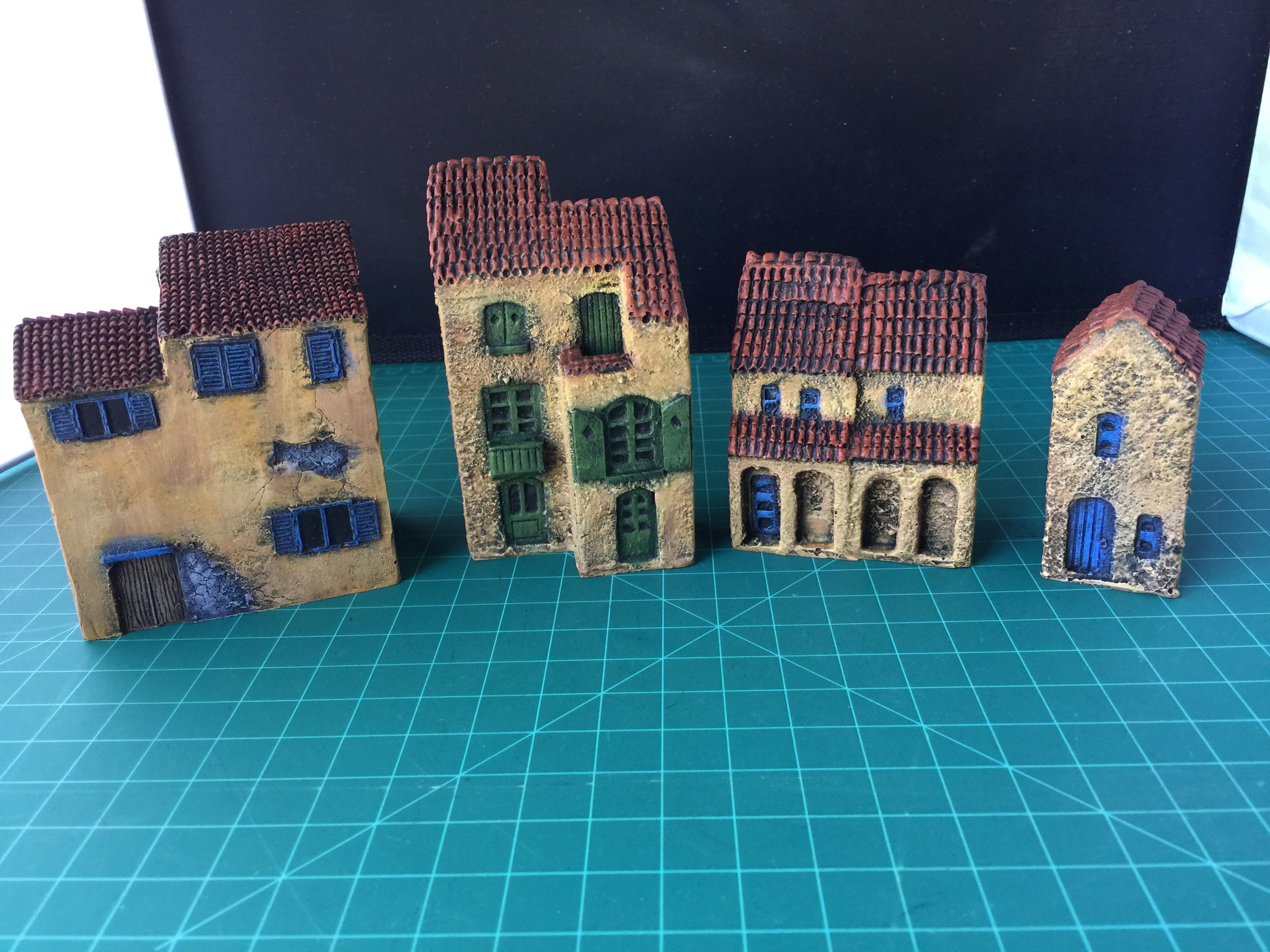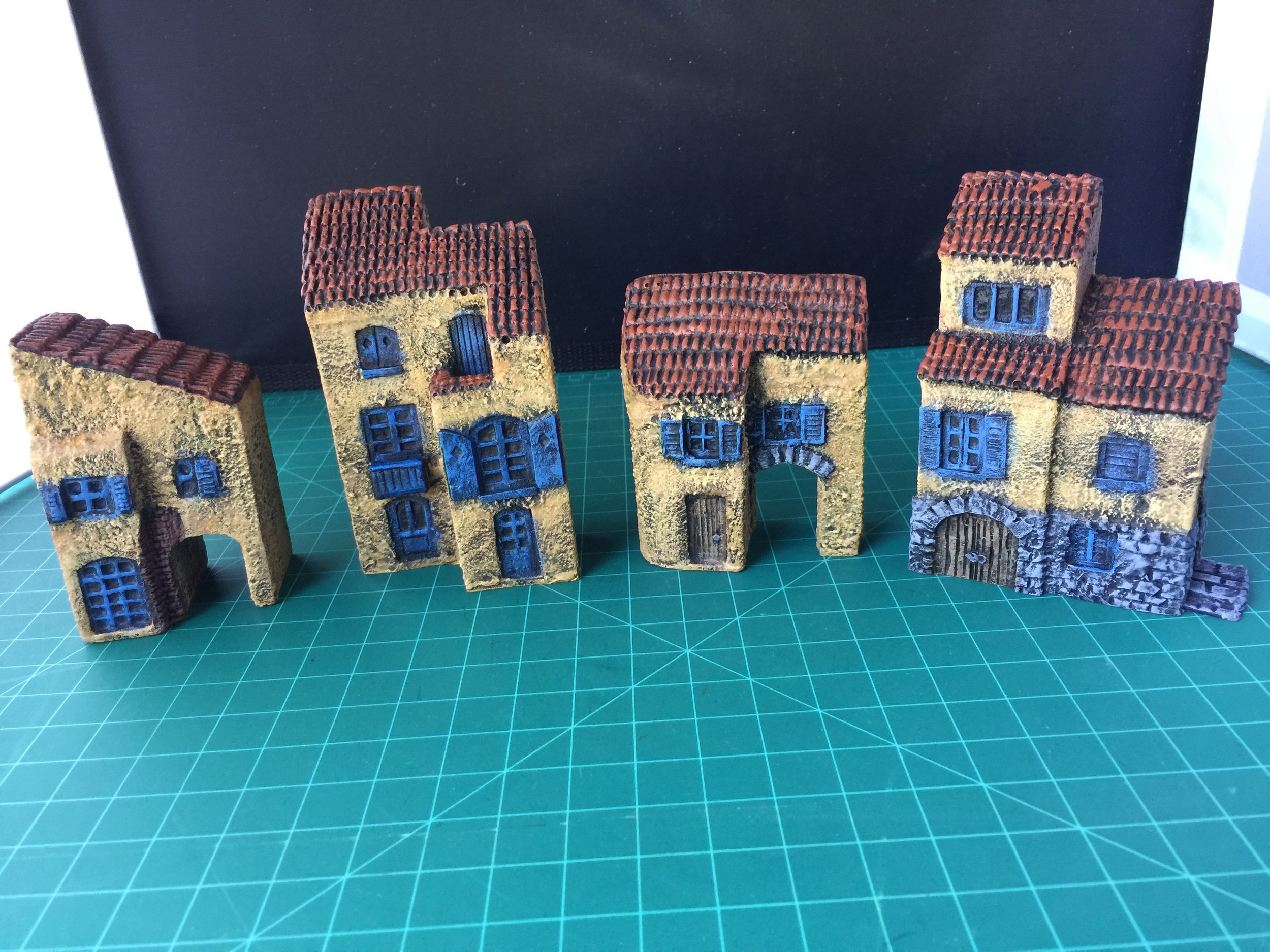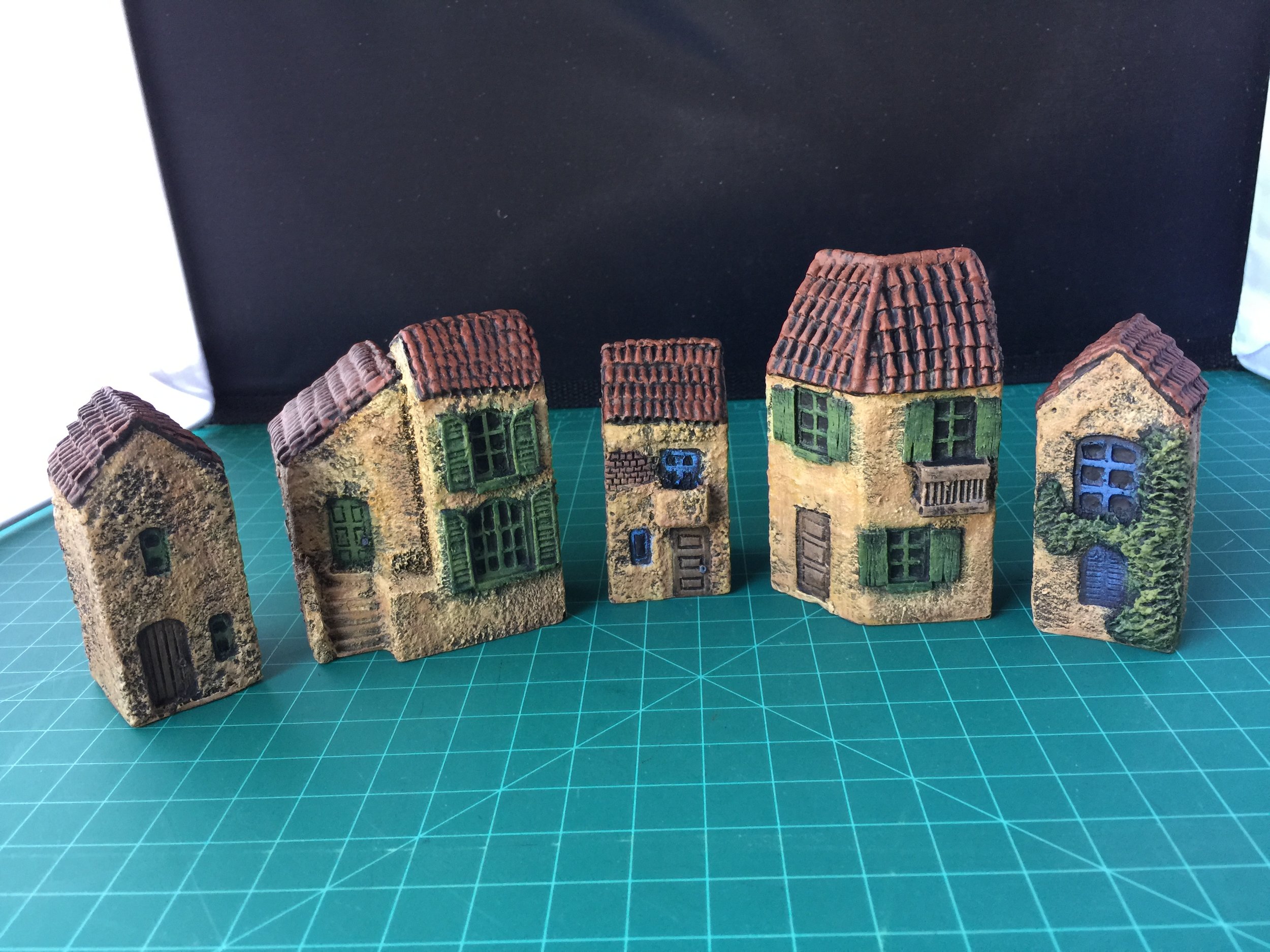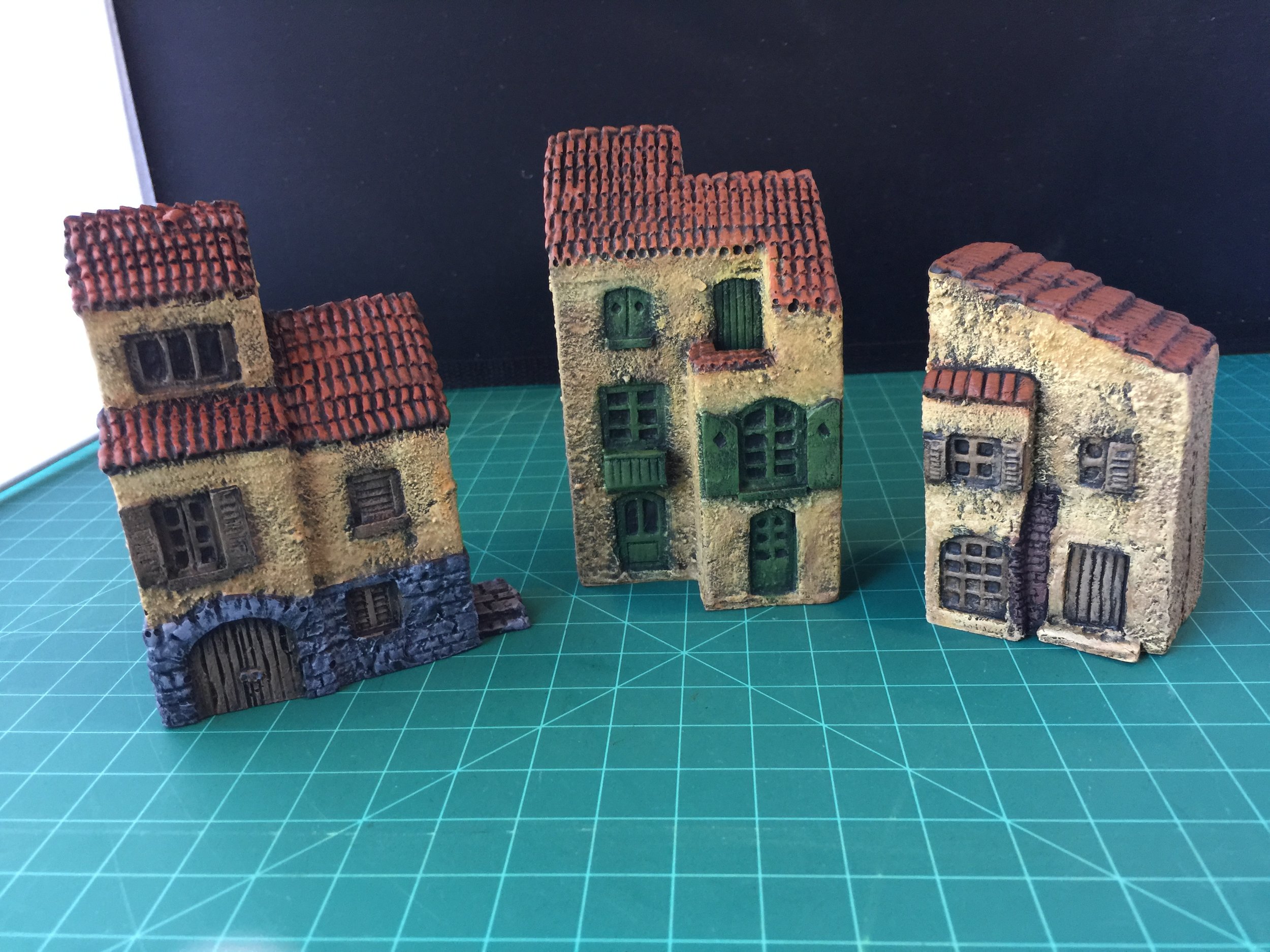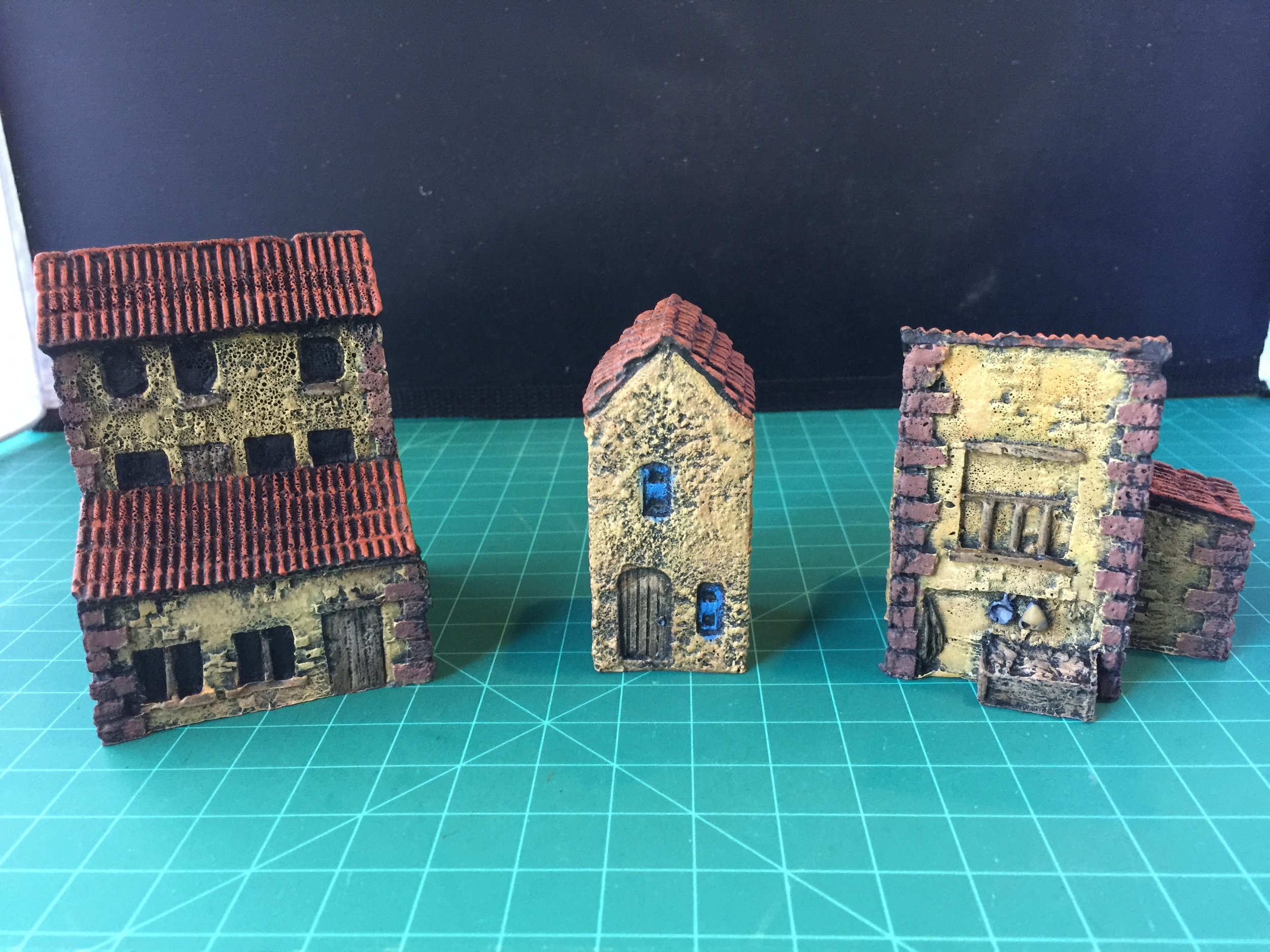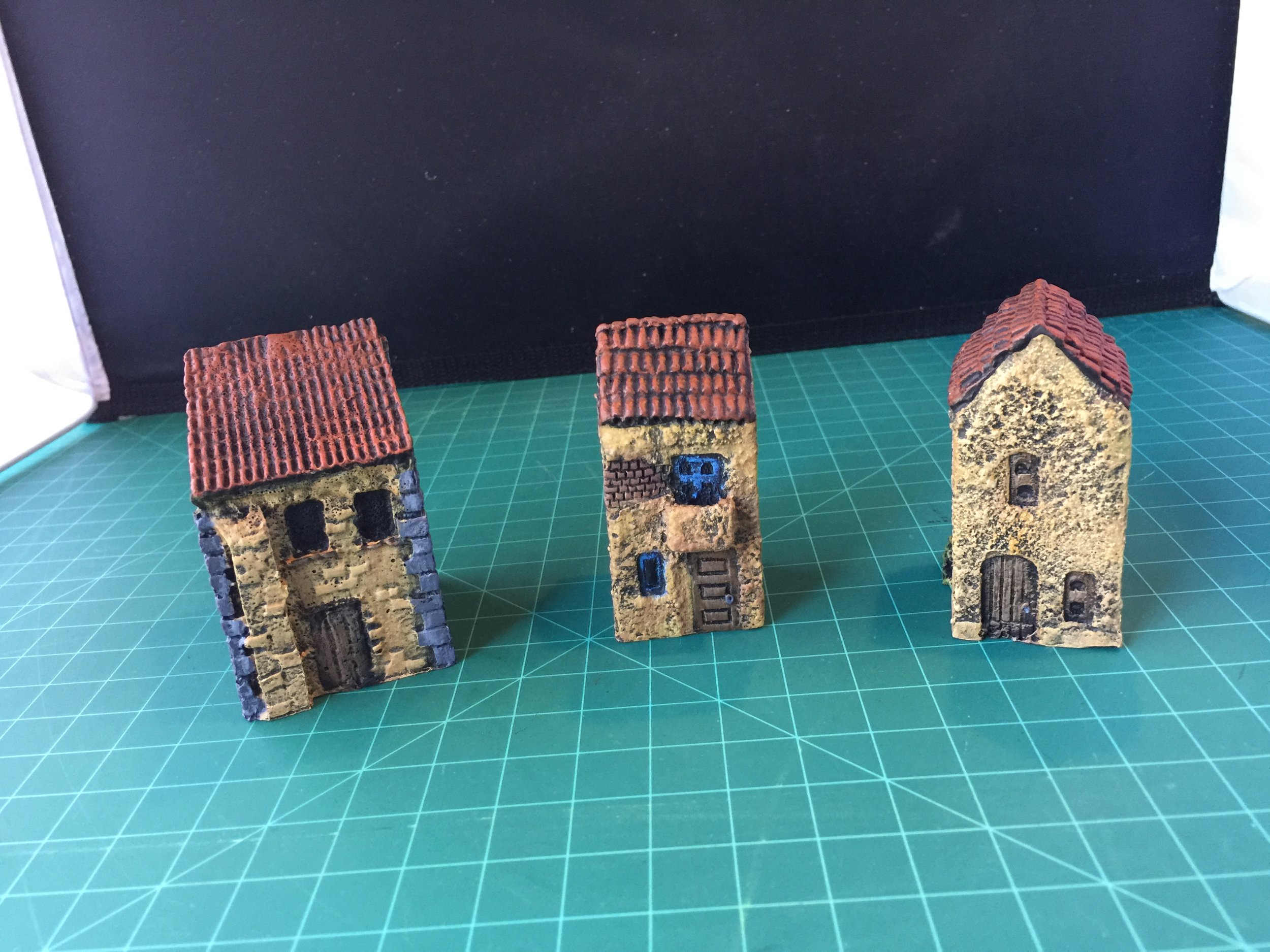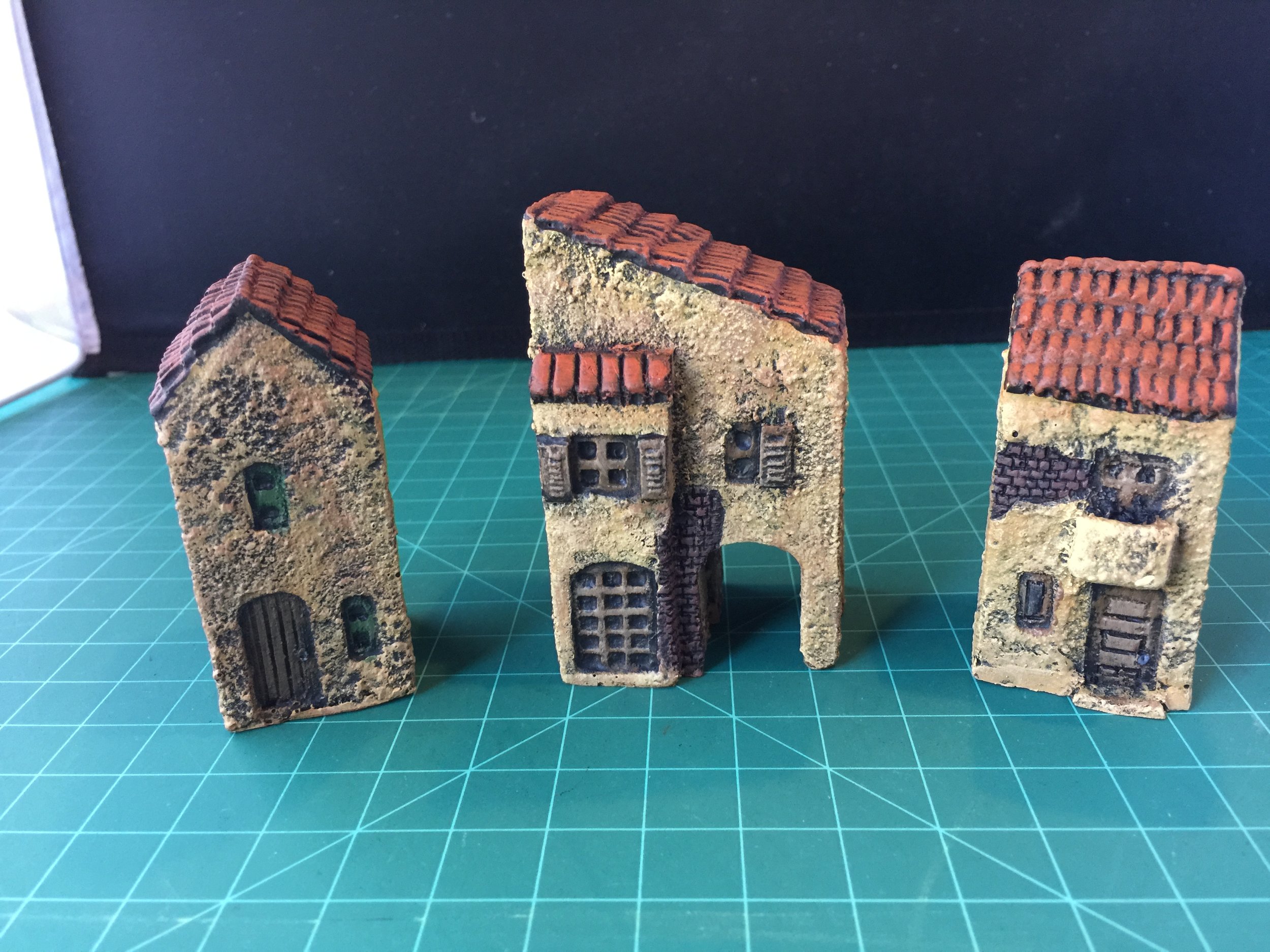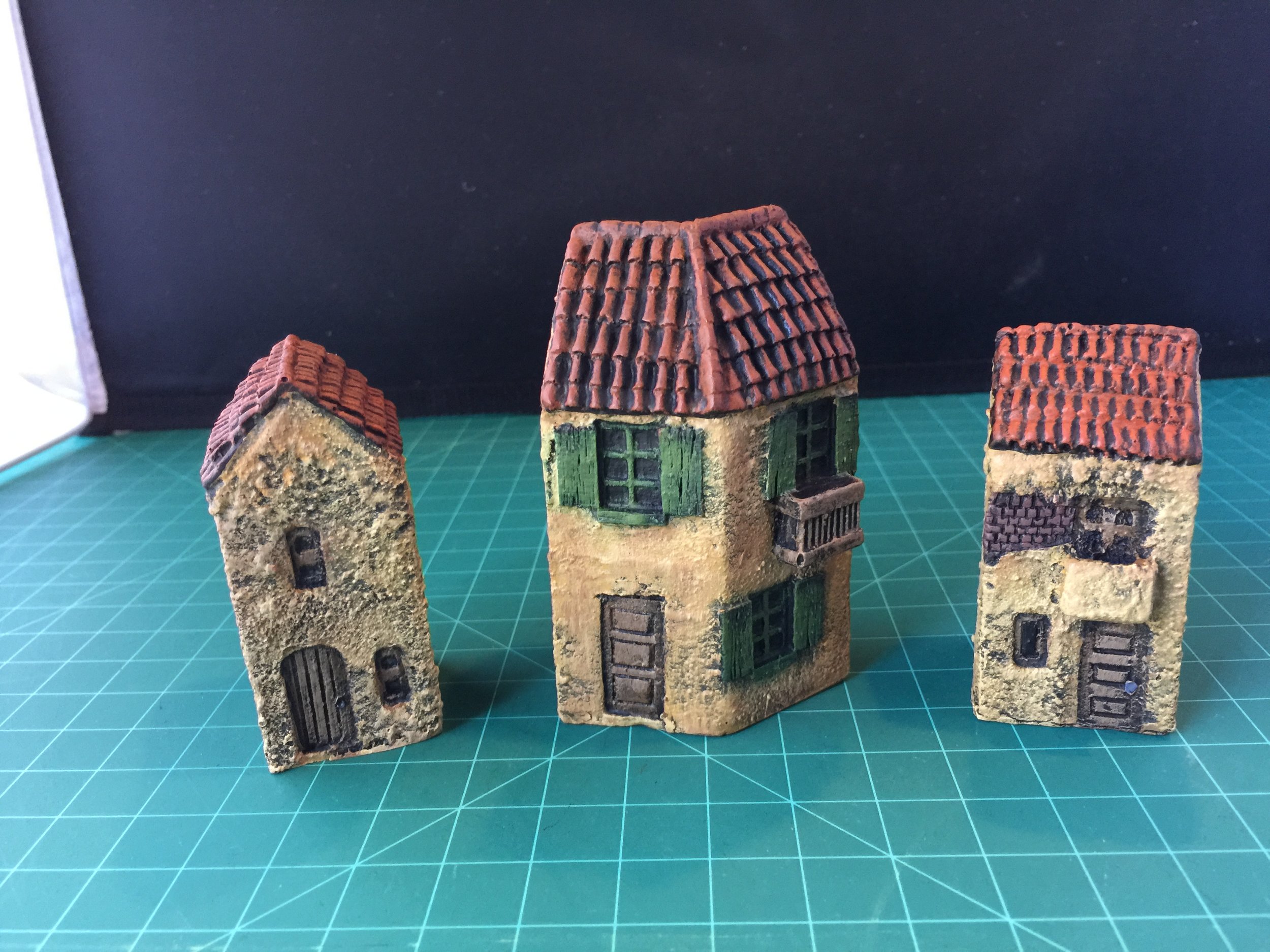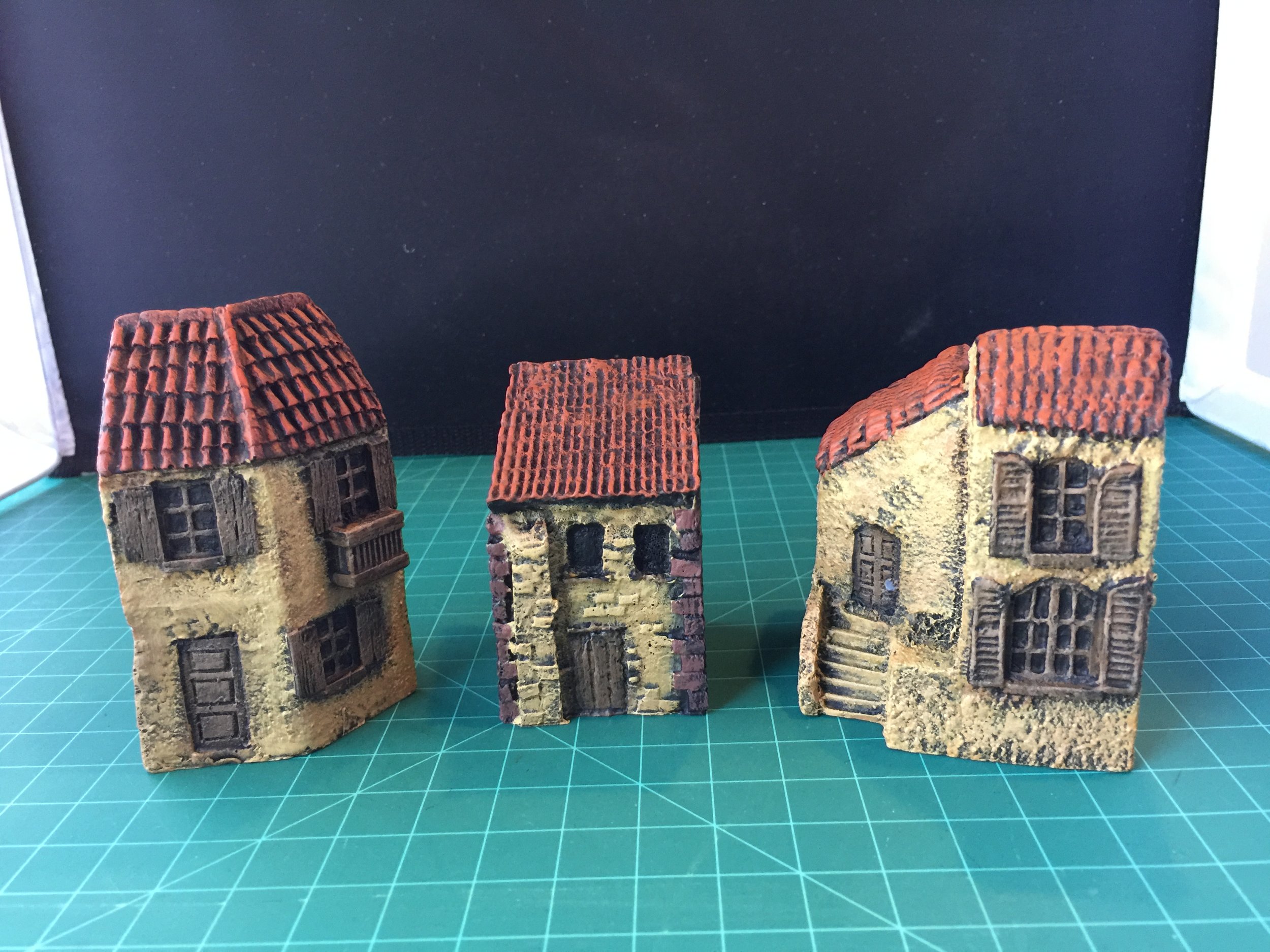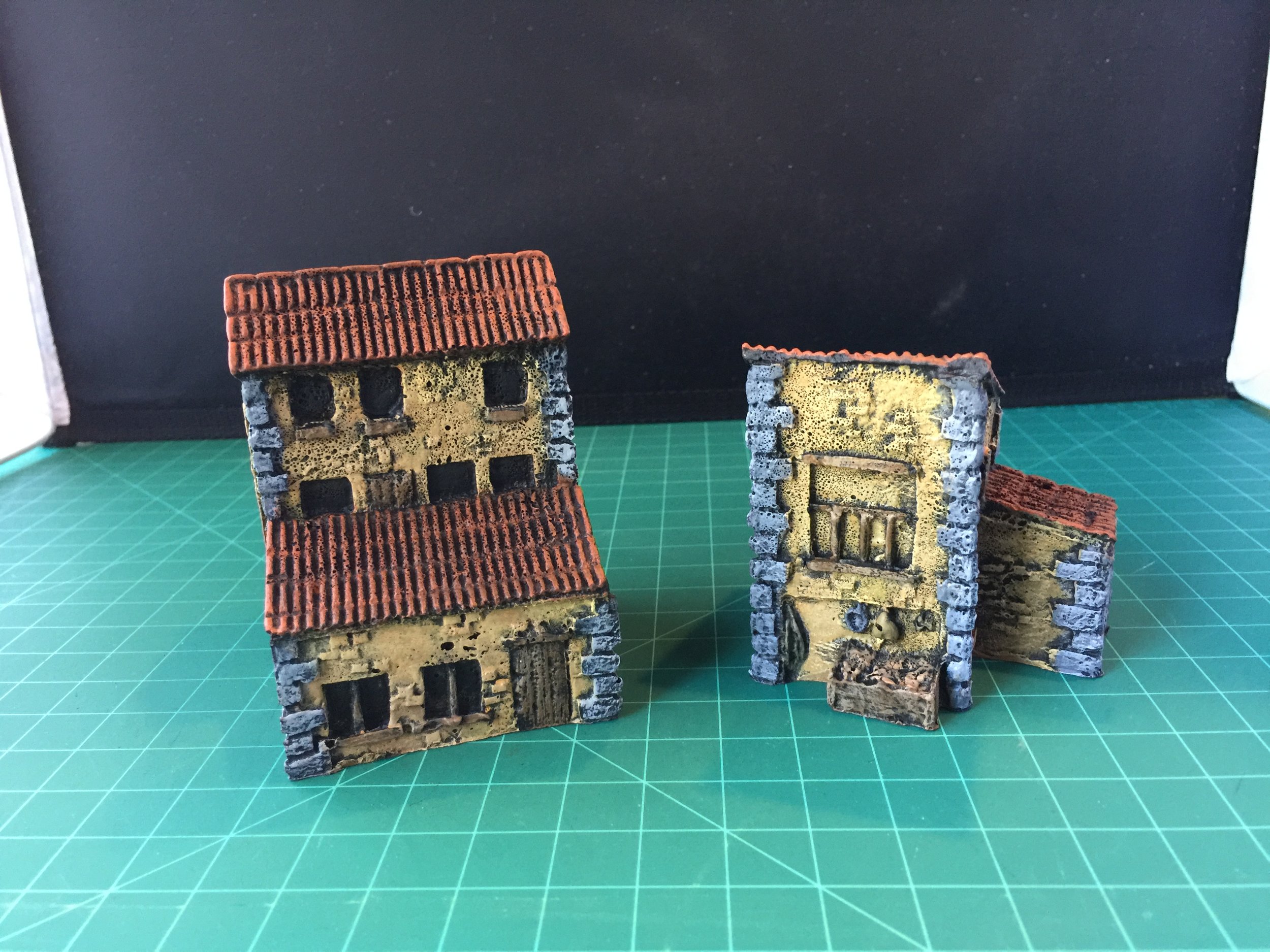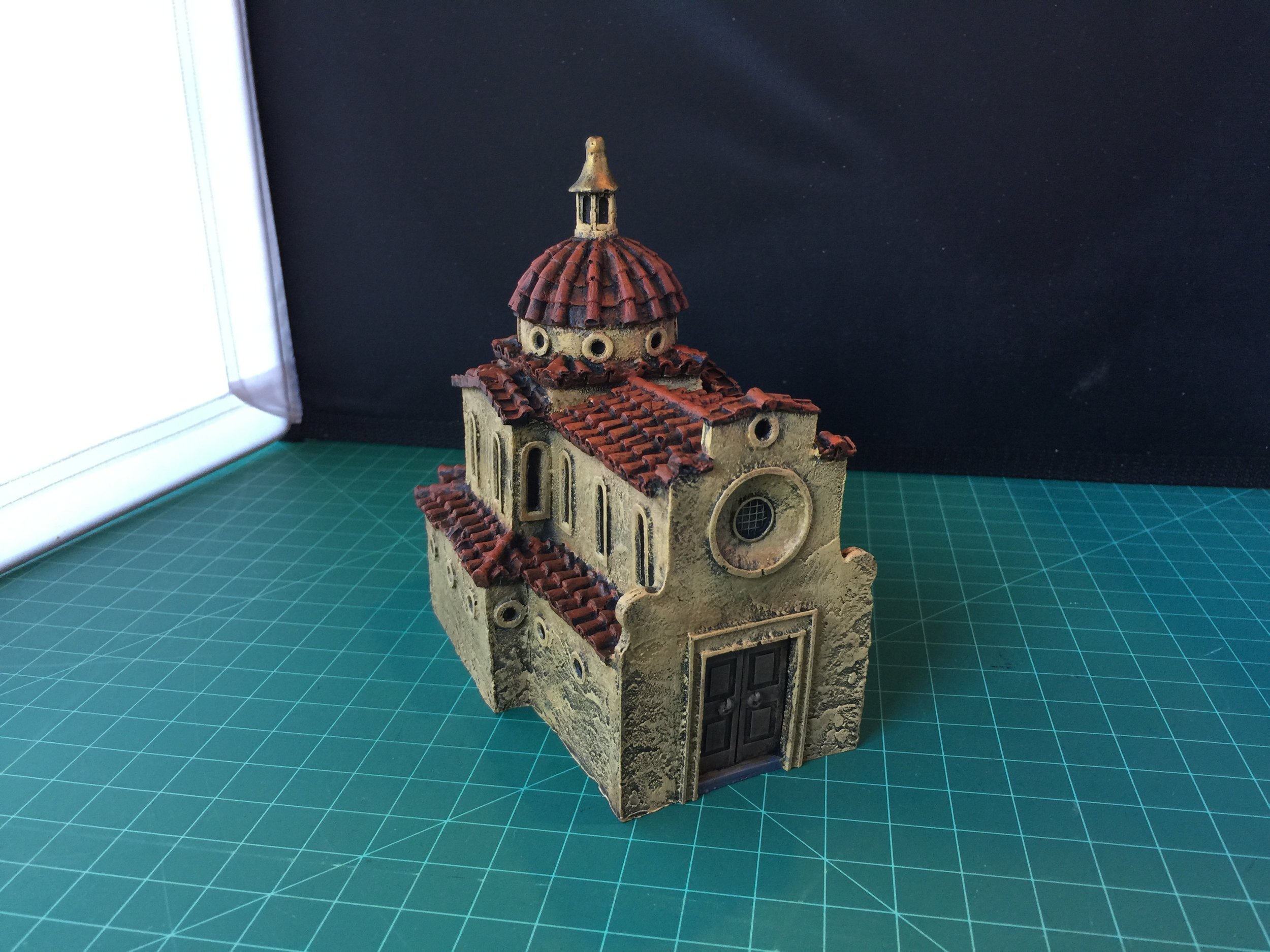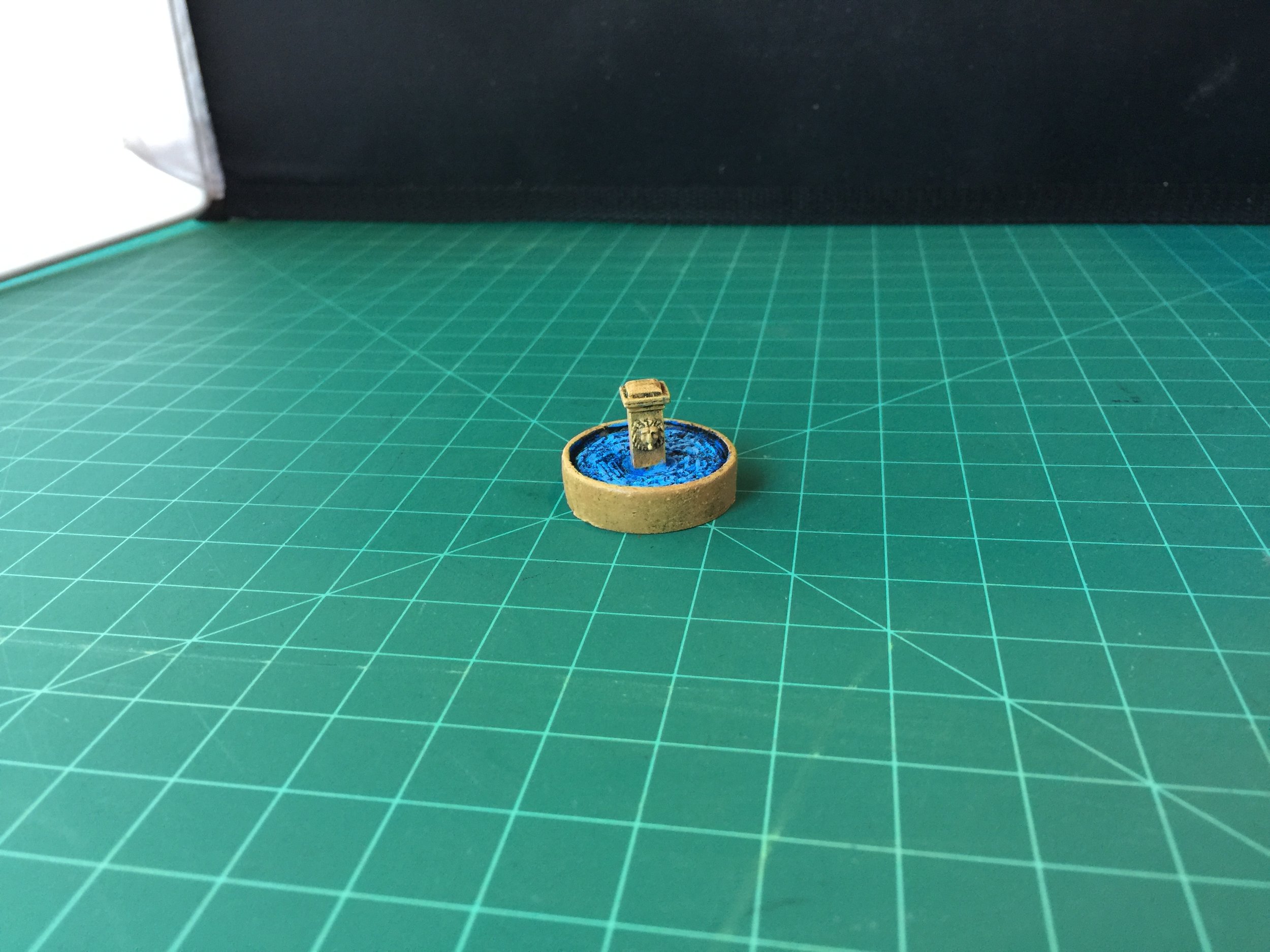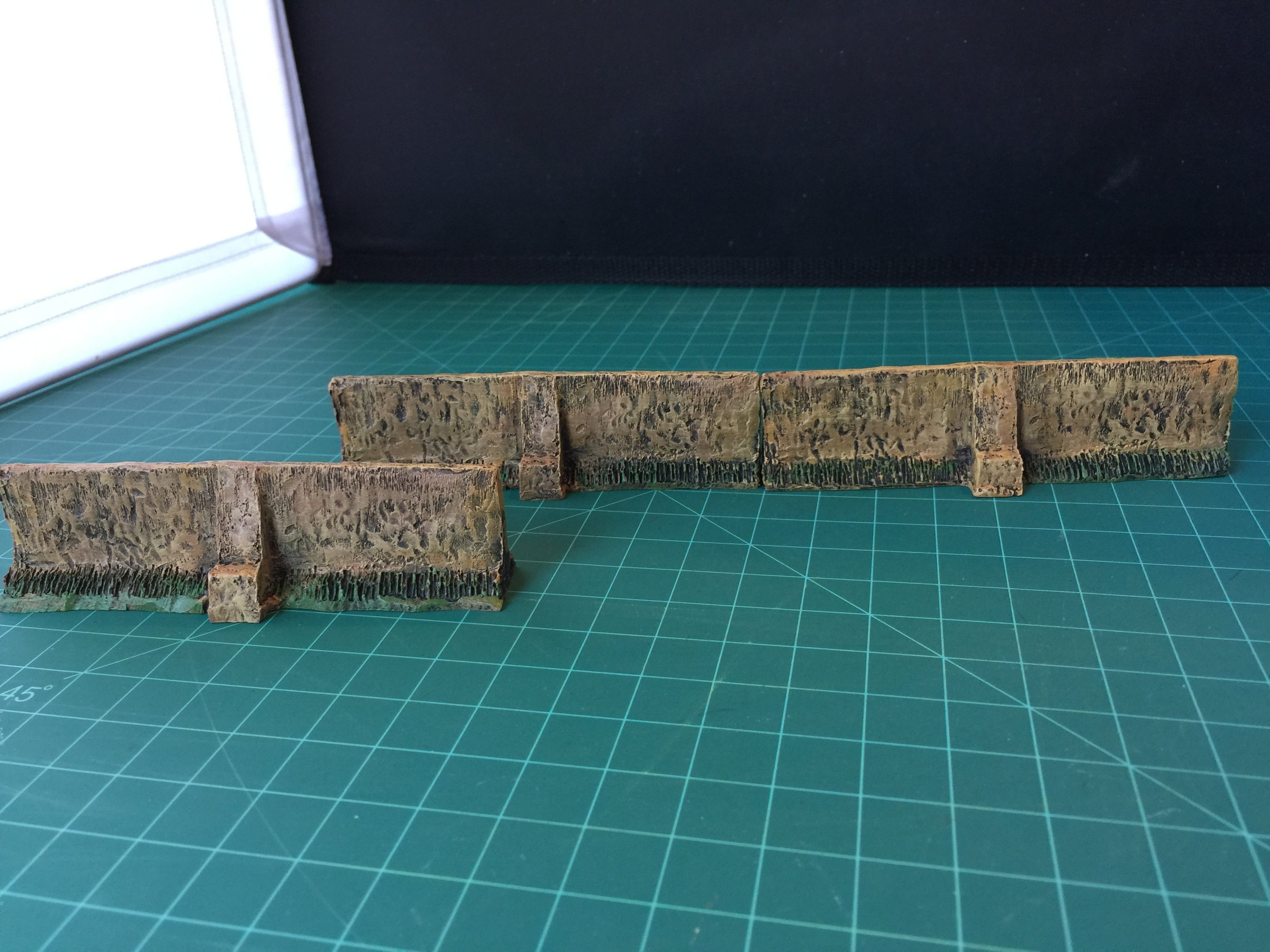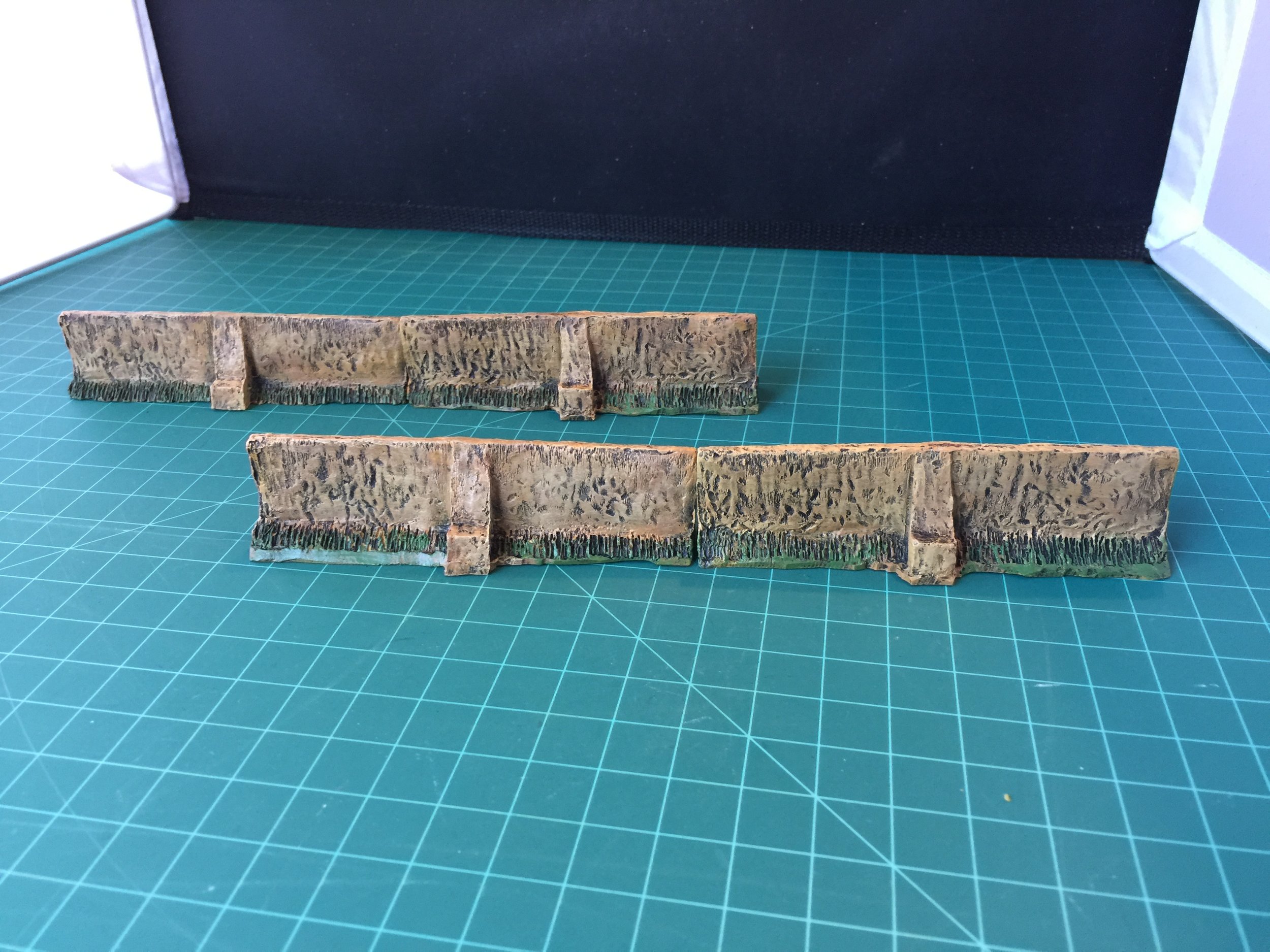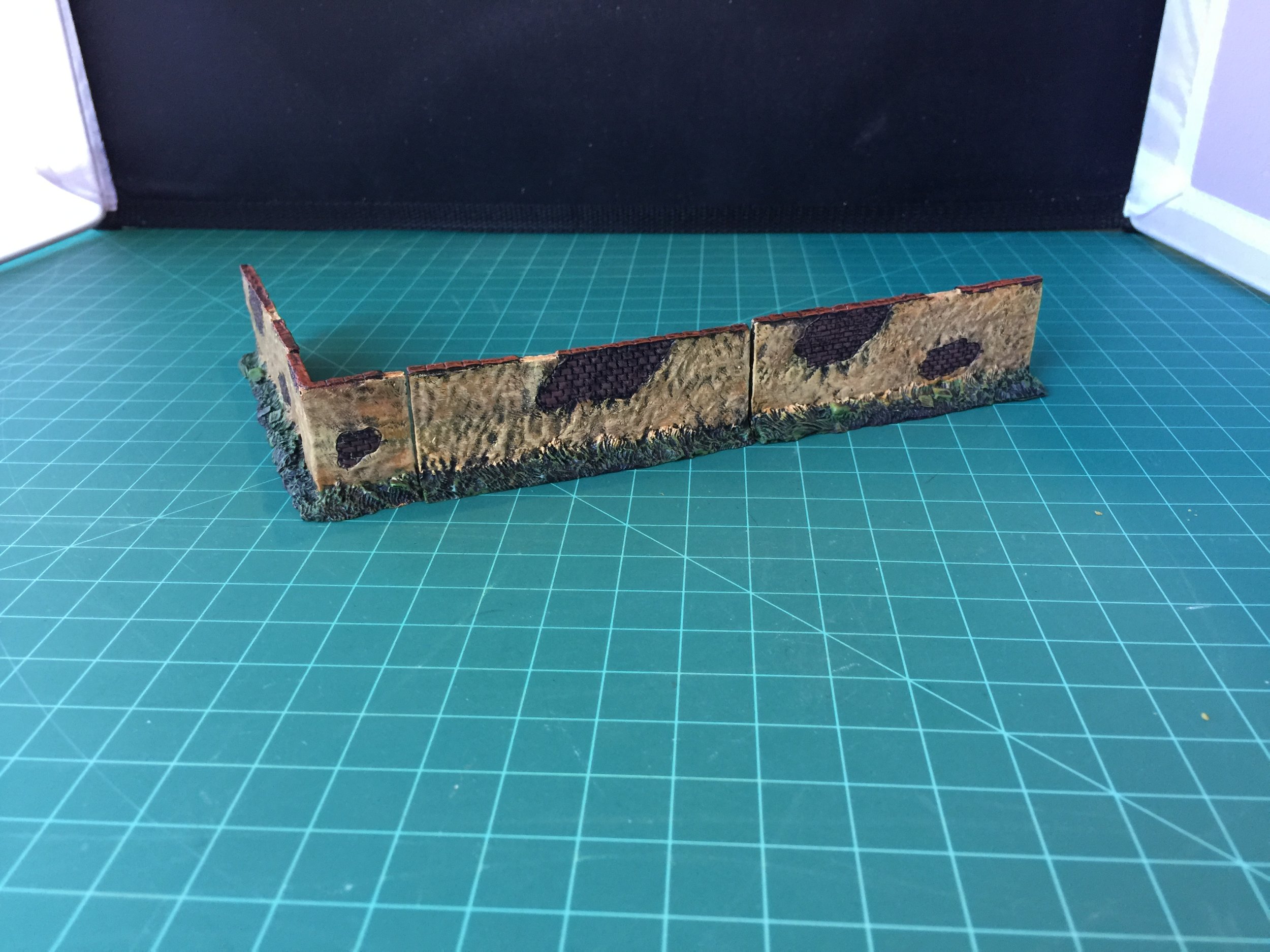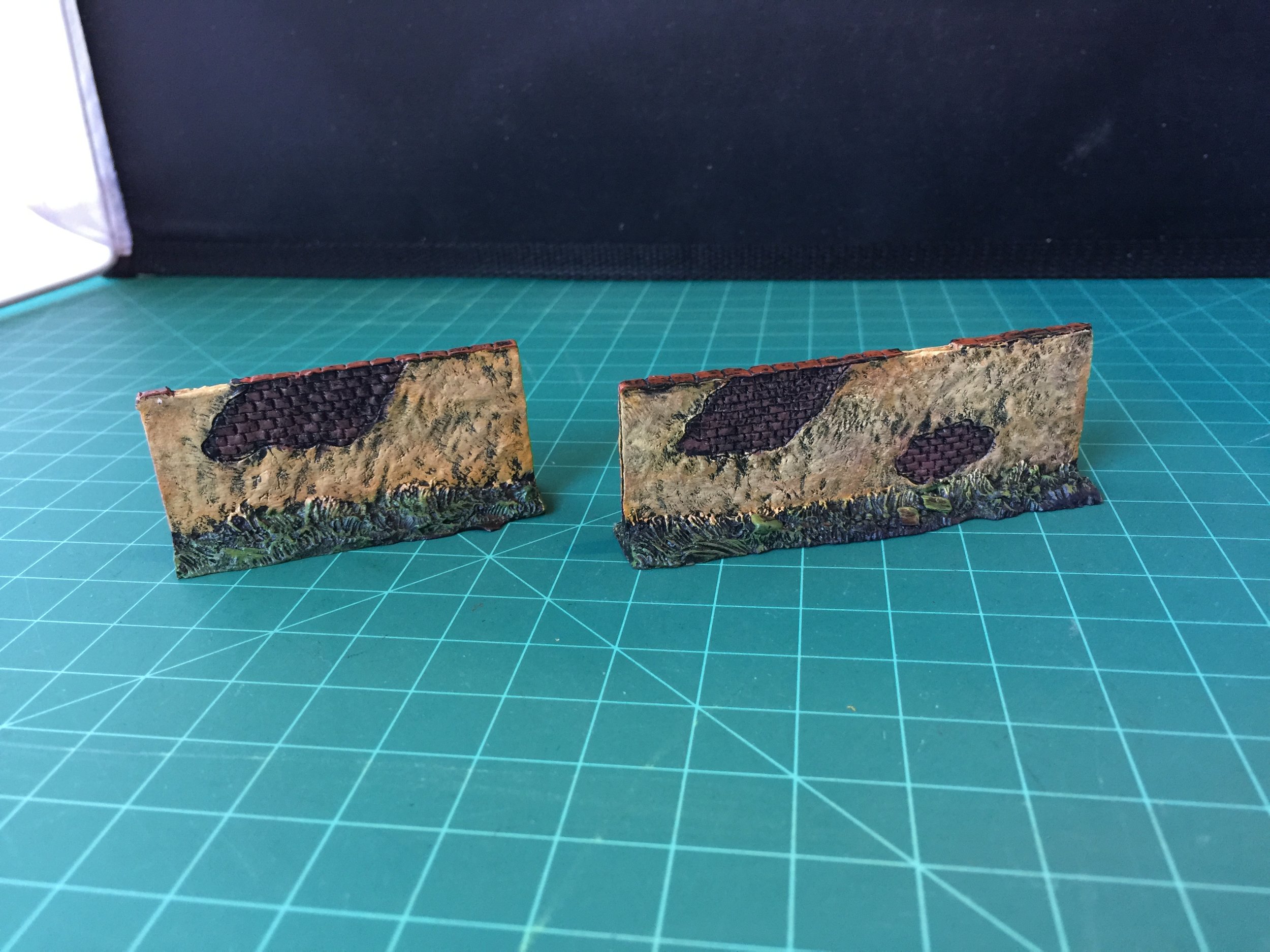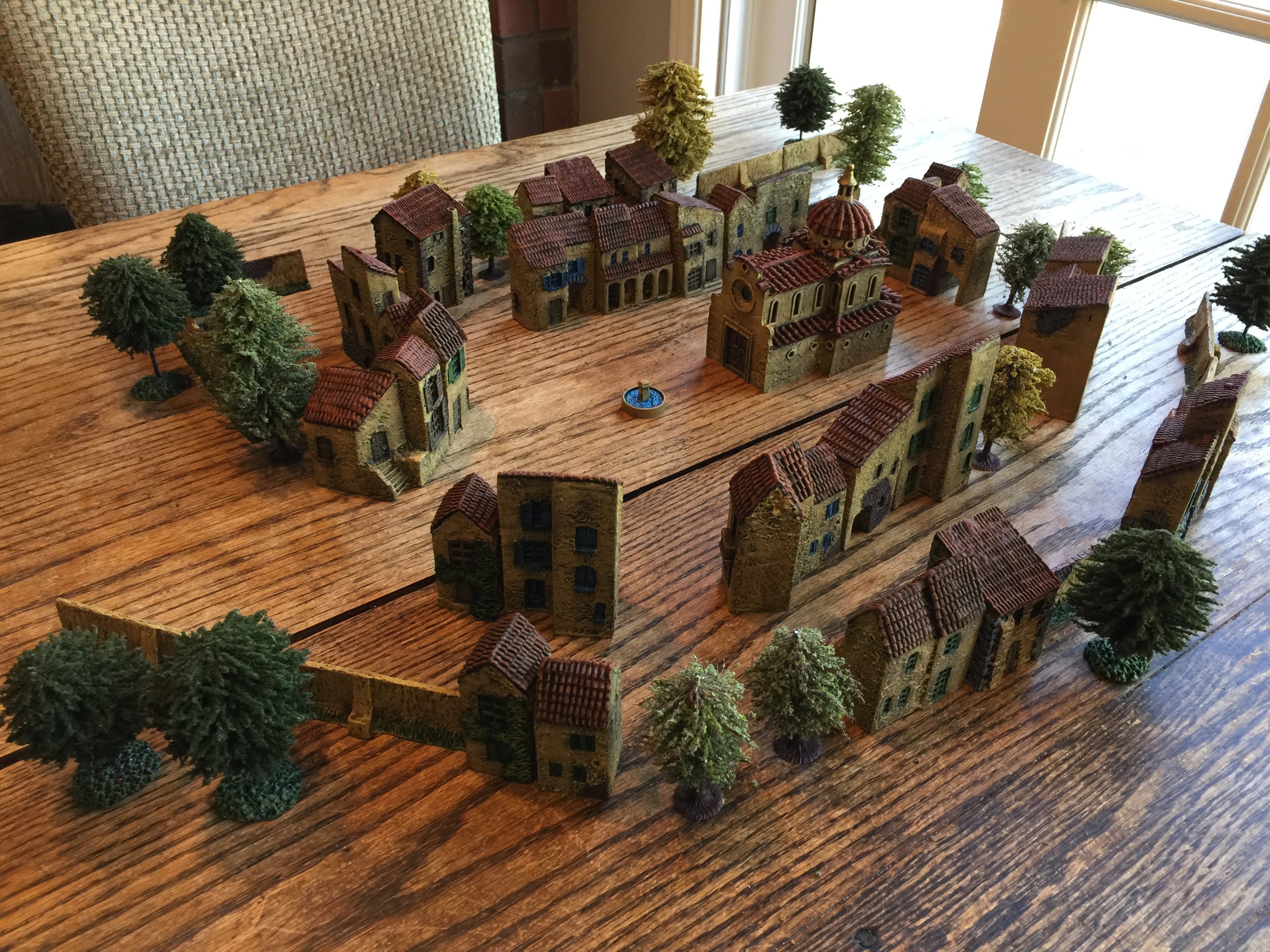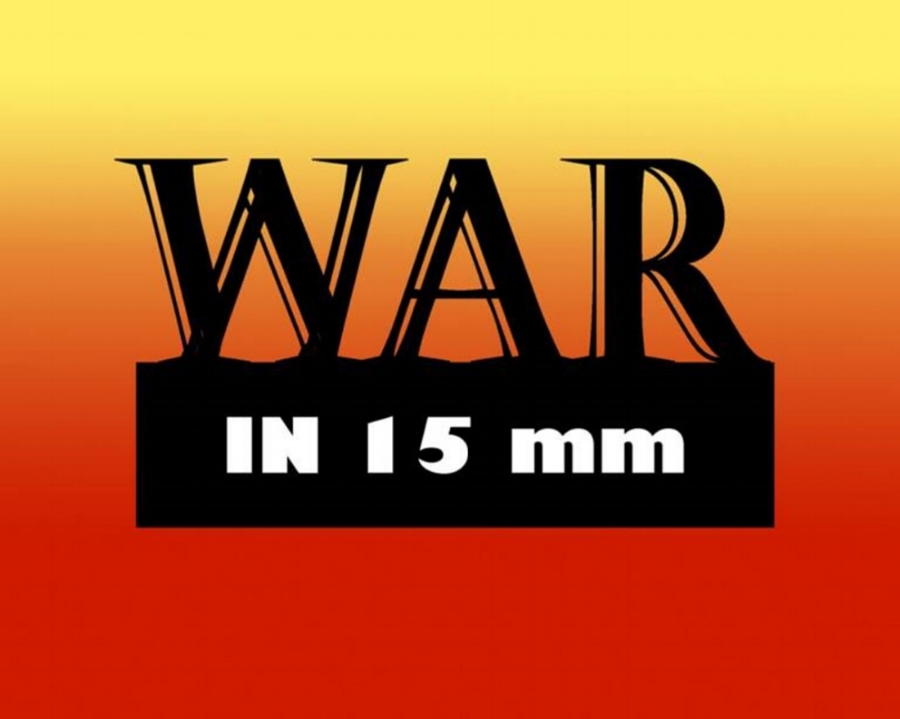September 29, 2019
The focus of this week’s workbench was painting another 15mm British regiment for my 1809 Peninsula collection. This week I completed the British 24th Foot (green facings). It is composed of 37 figures: one officer, two ensigns with encased flags, two drummers, one sergeant with pike, 19 center company infantry, 12 flank company infantry. All of the figures in this regiment are by Blue Moon except for the two ensigns that are by AB. I should probably note here that the two previously completed line regiments are by AB while the figures composing the 60th Rifles are a mix of AB and Blue Moon. With the 24th completed I turned my attention to the 31st Foot (buff facings). It has the same figure composition as the 24th. At the end of the week as my work on the British 31st Foot continued, I took a little break from my painting to cobble together a figure that would serve as the drummer with the lash in my punishment parade that I plan to have at the conclusion of the Peninsula collection gallery. Just a reminder, I took my inspiration for this punishment parade from Wargames Illustrated photo feature of Bill Gaskin’s 28mm punishment parade taken from his wonderful Peninsular War collection, the center piece of which was his beautiful Spanish city of Vincentino. That was featured in Wargames Illustrated #209 (February 2005). The soldier with the whip is a drummer as was the common practice in British units of the time. The figure I am using is taken from one of the Blue Moon 15/18mm British artillery crews. I cut off his cartridge pouch and added a three-strand whip to his right hand using floral wire.
In putting together this collection I had originally hoped that I could rely onOspreybooks and my Funcken volumes onThe Napoleonic Warsfor the British.In terms of the French I am sure I have all the reference materials I need given the fact that I did another Napoleonic collection focused on the 1809 conflict between France and Austria.As it turned out ,the material I have on British uniforms is too limited.Fortunately, I was able to get some reference guidance from one of the members of Lead Adventure Forum who directed me toBritish Napoleonic Uniformsby C. E. Franklin which appears to be a very thorough guide to British uniforms during the Napoleonic period
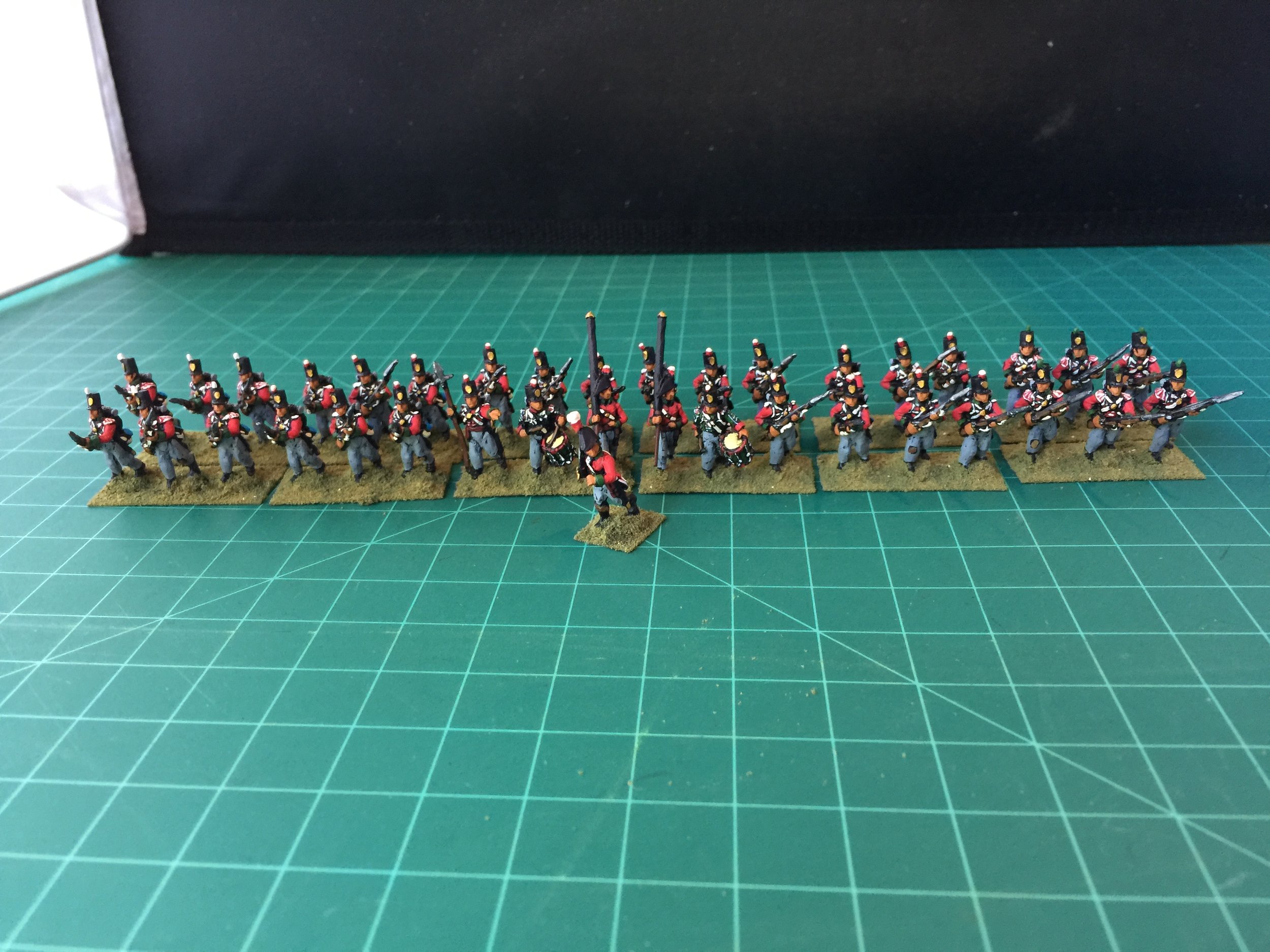
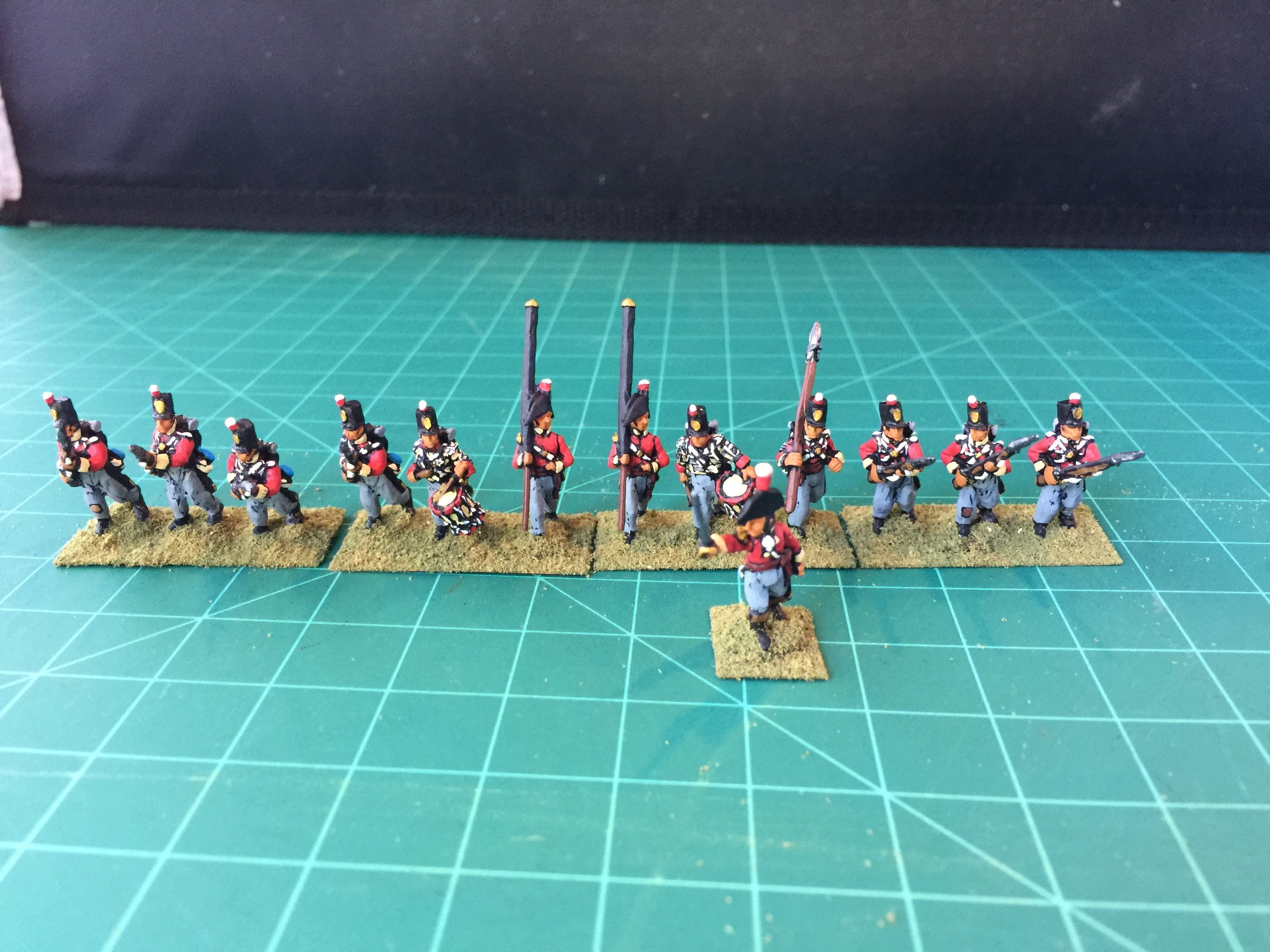
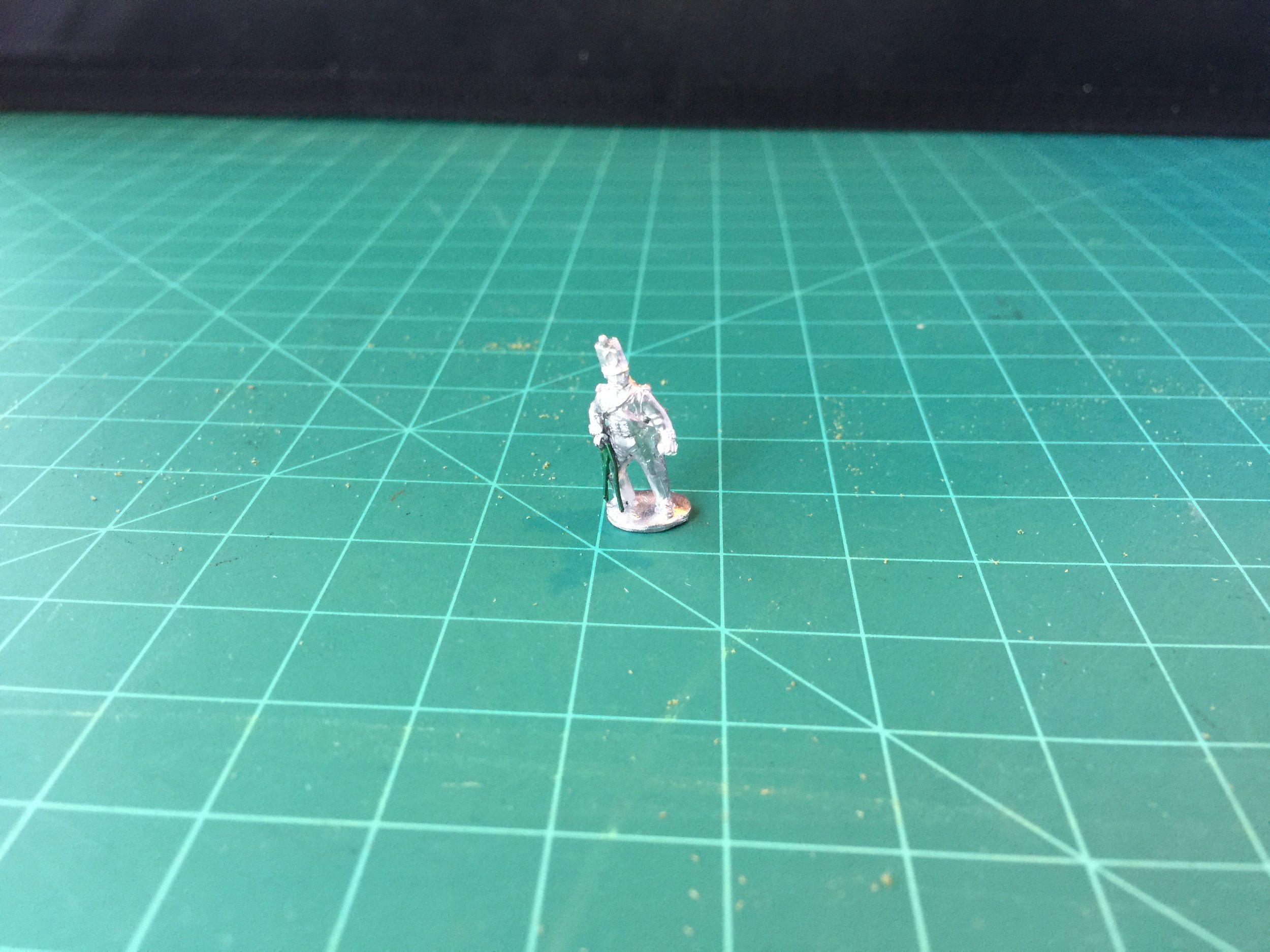
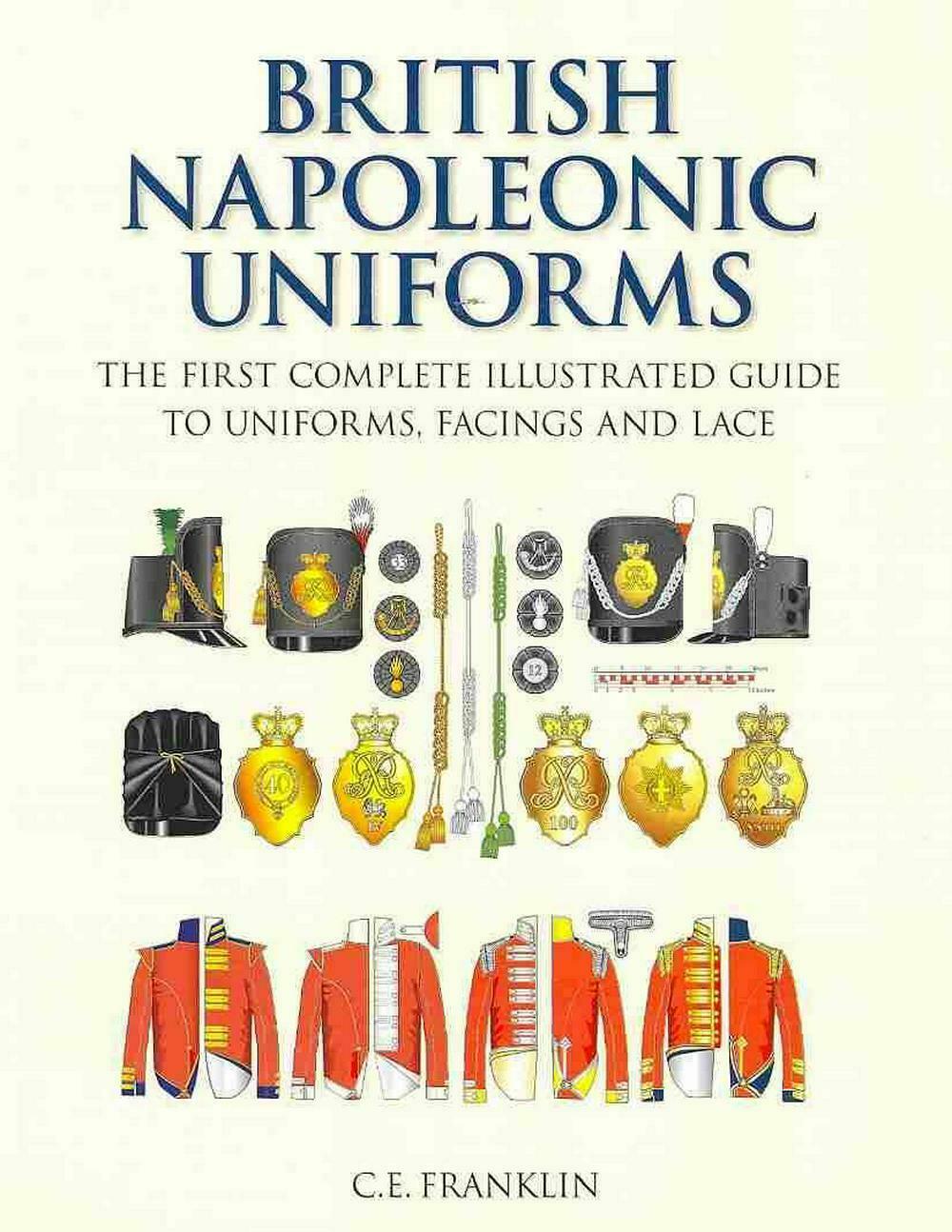
September 22, 2019
I’ve had a busy week this past week away from the workbench, but my work on the 60th Royal American Rifles continued. If I didn’t mention it in a previous posting, the colors I’m using for the 60th Rifles’ uniforms are by Vallejo and are Black Green for the jacket, Flat Red for the facings, and Blue Grey Pale for the pants. By the end of the week I completed the painting of all of the 60th Rifles… good feeling. One of the decisions I made while painting the Rifles was that some of my British units needed to have patches on their uniforms which in my mind is part of the look of British units in long, hard service in Britain’s campaign through Portugal and Spain. I think I will go back and add some patches to one of the Foot regiments previously painted… probably the 83rd.
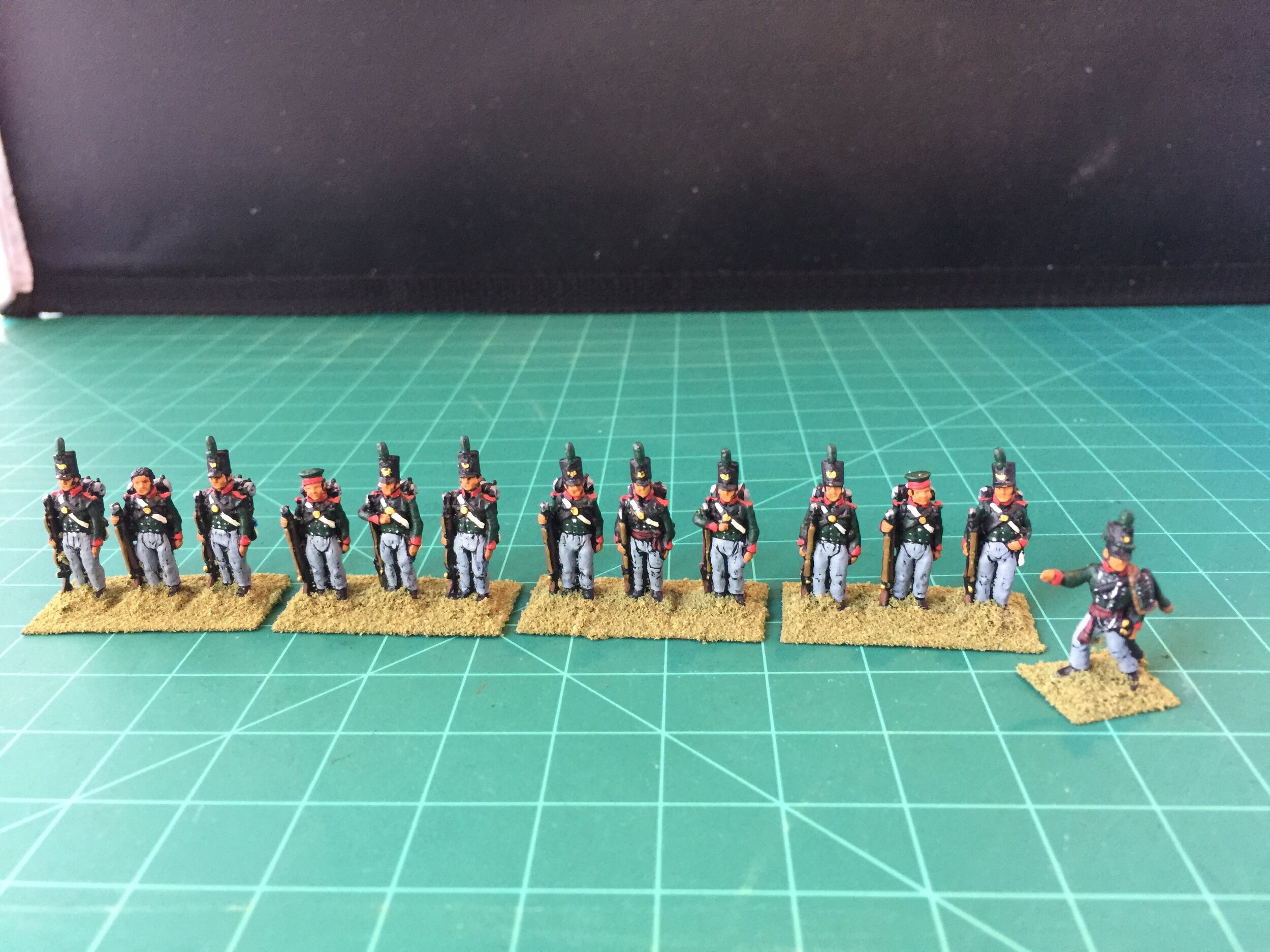
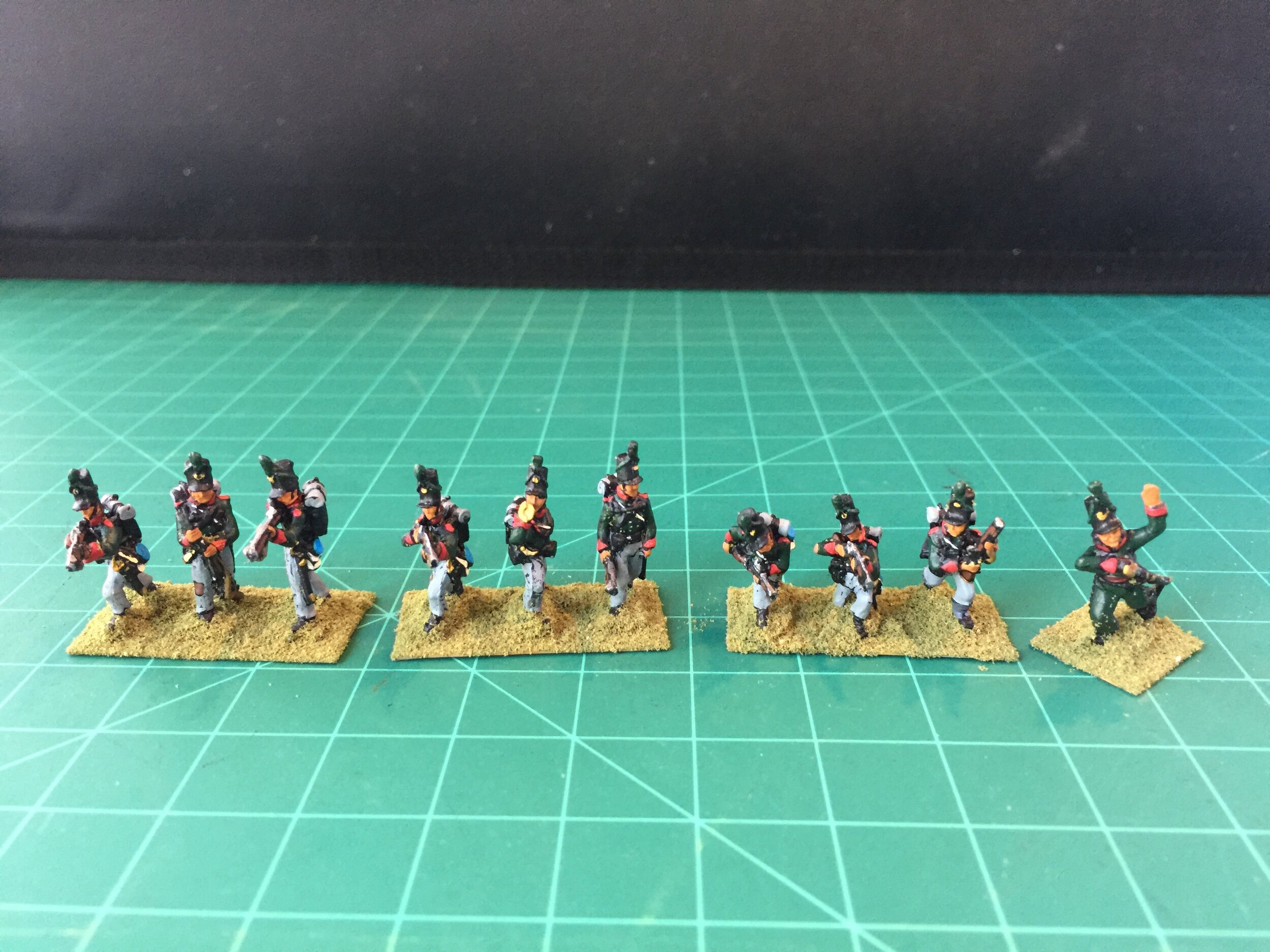
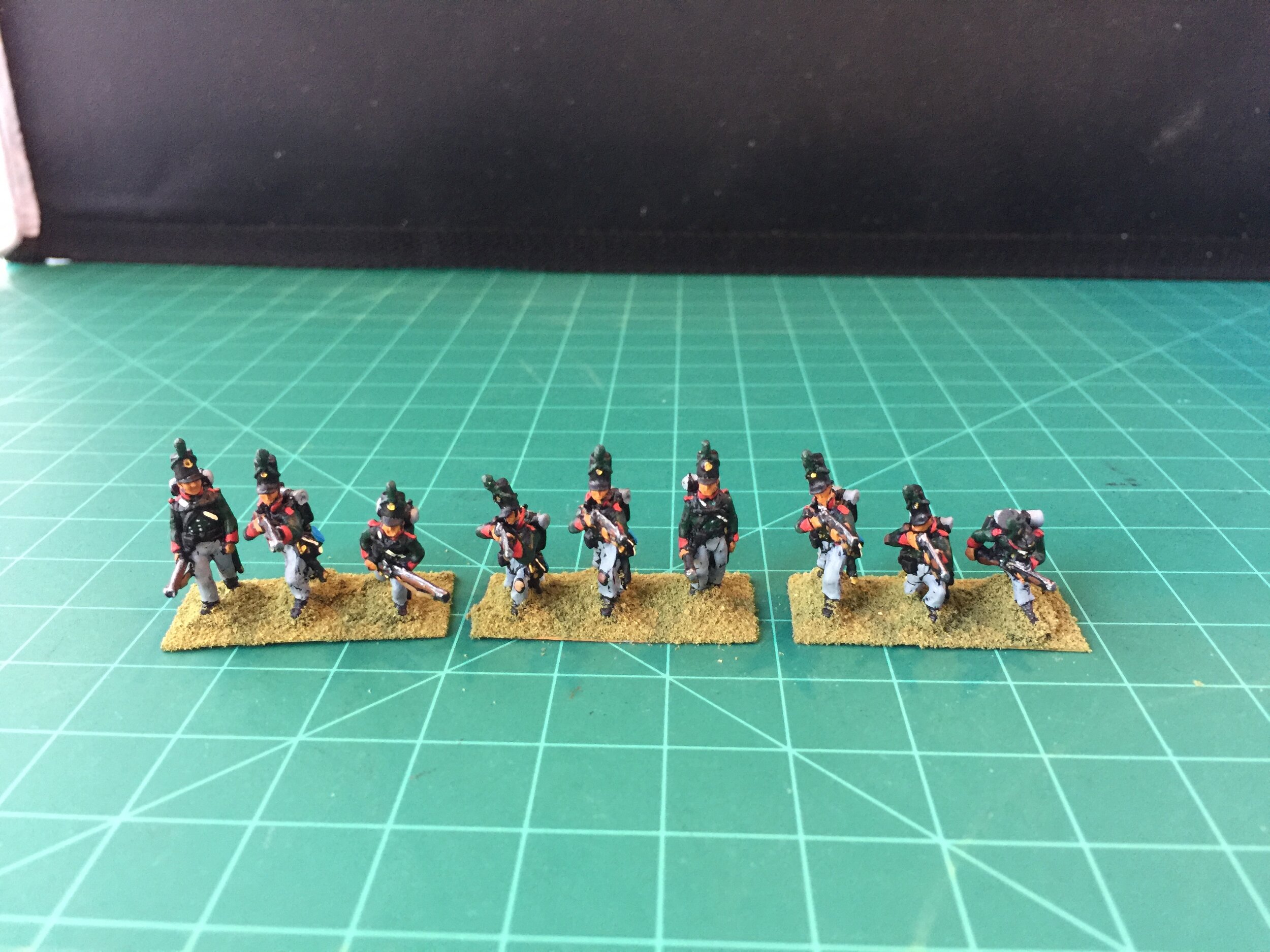
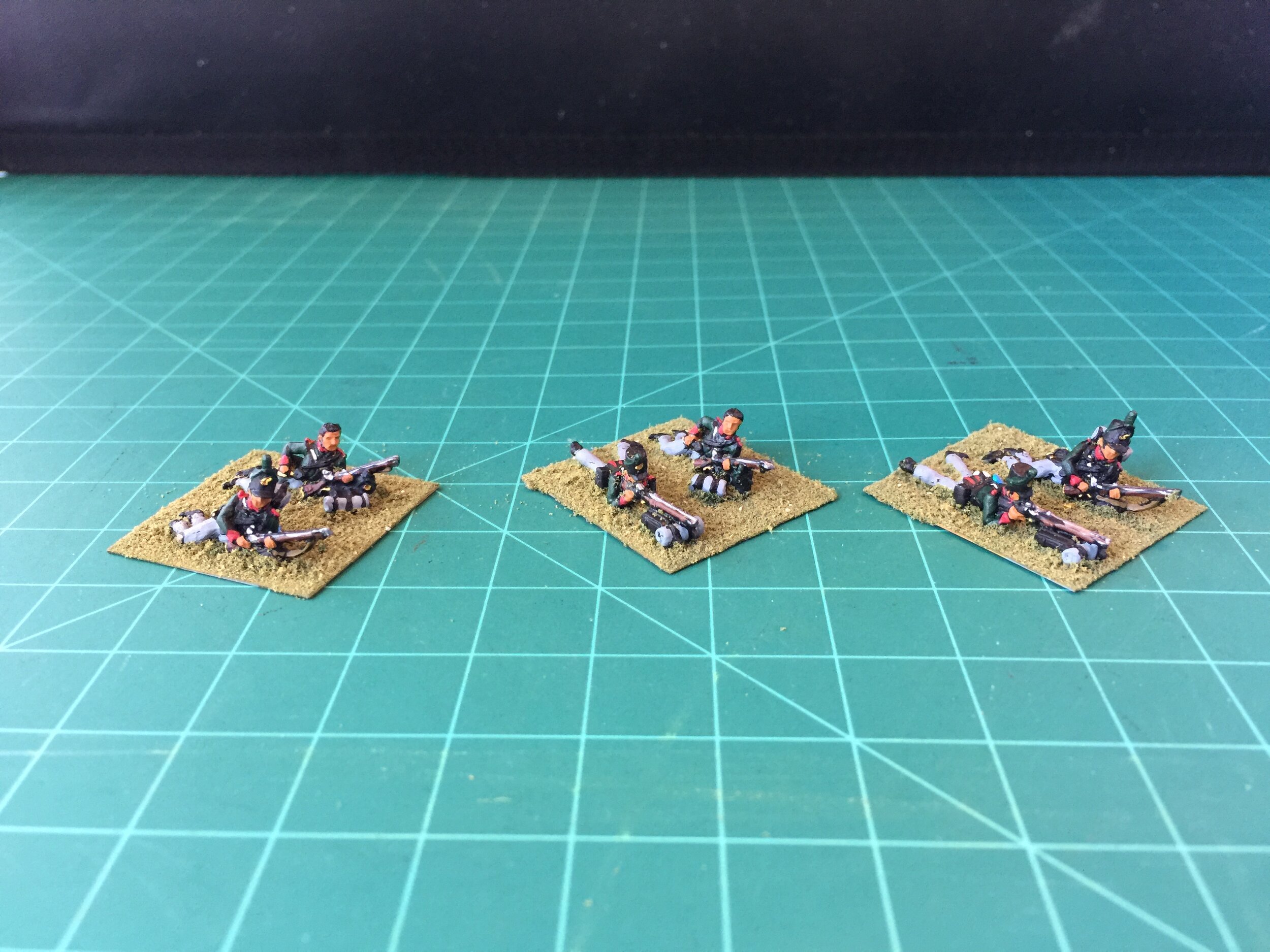
September 15, 2019
This week my workbench focus continues to be on 15mm/18mm British infantry for Spain in 1809. The week opened with a significant decision. As I mentioned in an earlier posting, I began painting figures for this project with pre-painted figures purchased from a friend of a friend who was in need of money for medical reasons… I don’t normal buy figures others have painted or have had painted for them. These particular AB figures were originally professionally painted in China. I recognized that the painting was good and not entirely incompatible with my painting so it seemed that with some minor painting modifications I could give them a look that would blend with what I would be doing on this project. That has proven to be correct. However, there was another problem that it took me a few days to digest/recognize. That problem was that the drummers painted in China were not correct. Since my previous Napoleonic project was French vs. Austrians/not Brits, I mistakenly believed that while there might be some minor corrections needed, the Chinese-painted figures were largely correct in terms of the look of the uniforms. What I came to realize late last week was that the drummers’ jackets were wrong. The figures done by the Chinese painters wore jackets that were basically the same as those worn by the rest of the battalion. In fact, in 1809 British drummers wore jackets that were not red but rather the color of the battalion’s regimental colors with the cuffs and colors done in red. I came close to leaving them wrong because repainting the jackets and adding the musician lace on the arms was going to be a lot of trouble. Fortunately, “correct” won over “easy,” and I went back and repainted the 83rd’s drummers and have done the drummers for the 7th correctly as I will for the rest of the units I will paint.
The second moment of recognition made this week was that I found a grey color for the British pants that I like. The fact is that the pant color probably had a lot of variance in terms of units in the field… age, fading, wear and tear. In Spain the pant color probably ranged from off white/beige to brown (local fabric) to different shades of grey. The color I have decided upon is Vallejo Blue Grey Pale (156).
Over the course of the week I completed the painting of the second British AB infantry regiment. Since I had two of the Chinese-painted AB infantry figures left over, I decided to use one of them to practice painting one with British Rifle colors. At that moment I realized that I needed to make a choice. Was I going to do the 95th Rifles, made famous by Bernard Cornwell’s novels about the adventures of Richard Sharpe of the 95th Rifles, or was I going to do the far less well-known 60th Royal American Rifles? I decide to go with the 60th because on a 15mm figure that regiment’s colors are more practical… more clearly defined than the black-on-black green of the 95th. By the close of the week I had finished painting six of 60th Rifles. All in all a good week at the workbench.
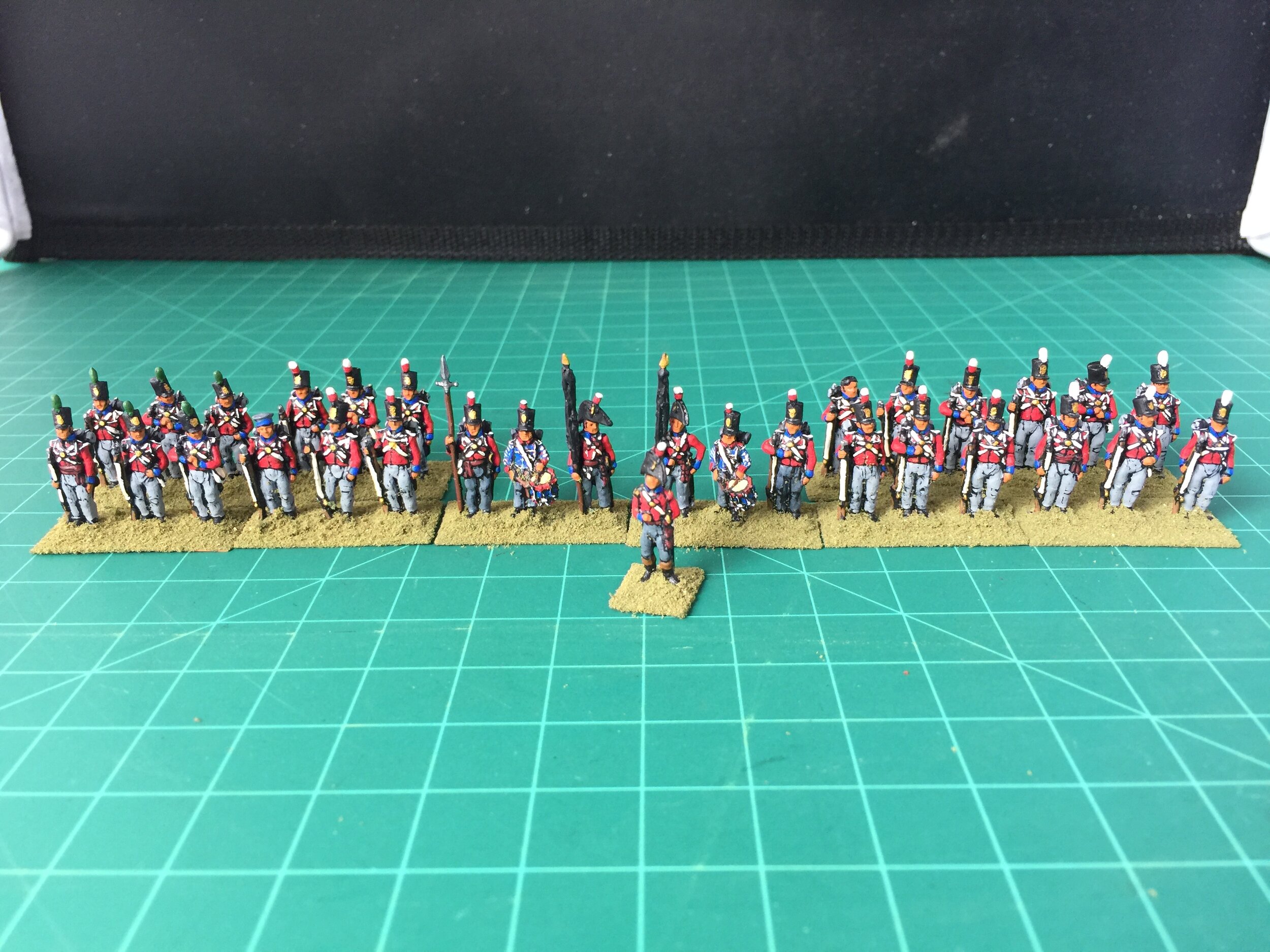
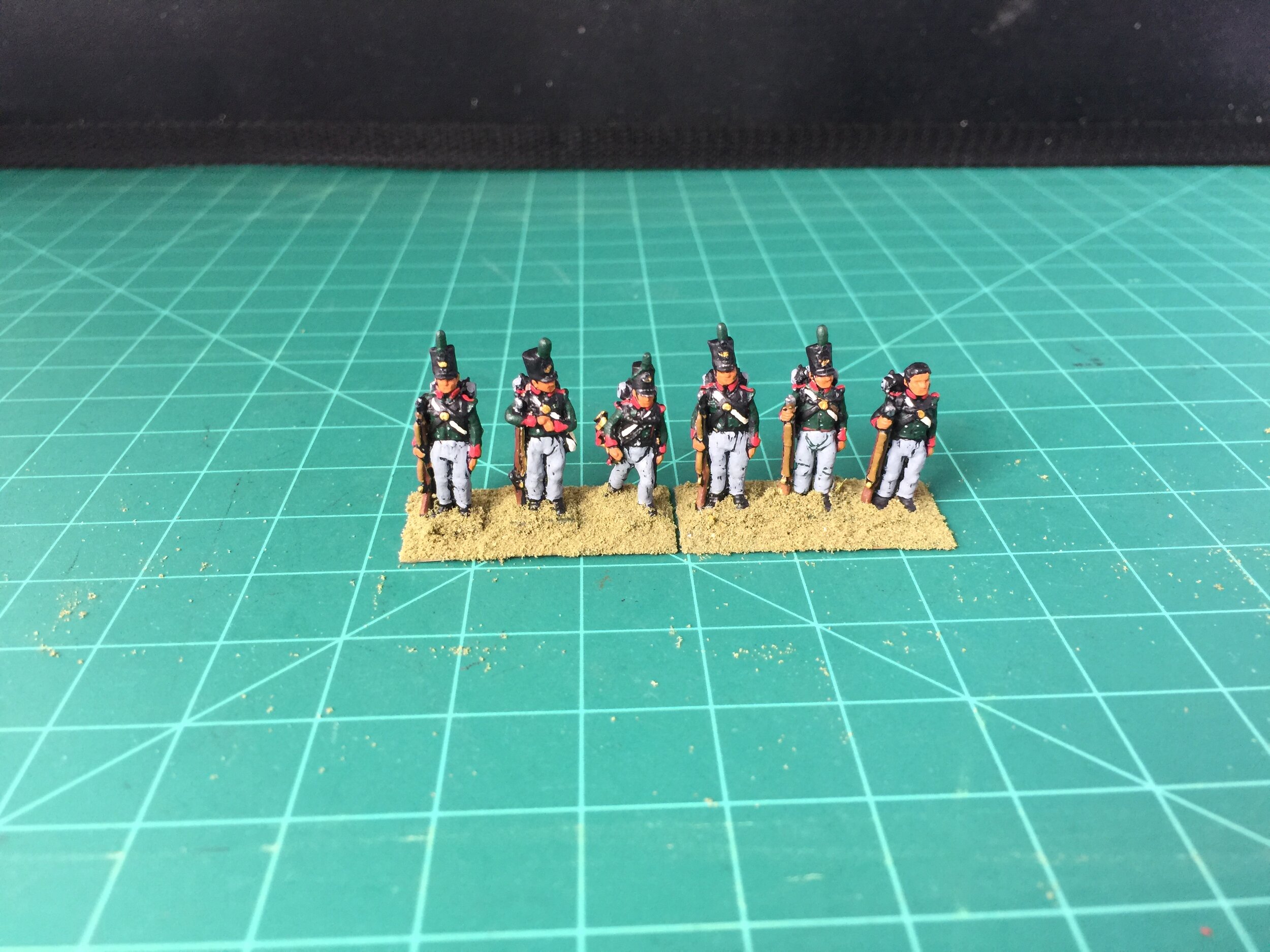
September 8, 2019
I began this workbench week by painting Hovels’ 15mm wayside cross for my 1809 Peninsular collection. I followed that by basing 10 trees (trees are by Grand Central Gems) on bases of metal washers covered by Milliput. I should note that since this is being written and photographed on Saturday afternoon, the picture of the trees shows them without their Woodland Scenics ground cover which will probably be added before the end of the day.
With the trees based I turned my attention to another Peninsular project, one that I had been thinking about for years. It is a unique project in that it involved a regiment of British AB Napoleonic figures that I did not paint. The fact that I had not painted these figures is what made them unique in that I do not make a habit of using figures that were painted by someone else. This was a special case in that these were figures owned by a friend of a friend who was selling them to raise money to pay off some medical bills. They were figures that had been painted in China. They were figures I would have purchased unpainted at some point so I decided to help my friend’s friend out. Generally speaking the figures were well painted and not significantly unlike my work so my job this week was to modified the existing paint jobs to look more like my style so they will blend in with all the other figures that will be part of this project.
With the completion of that task, my first British regiment is now done. I should note here that while my uniform detail for these figures may not be as precise as I would do with 28mm figures, I will be using facing colors that represent British regiments that say service in Spain during this period. The first completed regiment’s facing reflects the 83rdFoot. The second regiment that I began this week will have the facing colors of the 7thFoot. I set these figures on narrower bases than is normal for me because in addition to their general use as part of my British Peninsular army, I plan to parade these figures in the plaza of my Spanish town as witnesses to a flogging. These particular AB Brits are the only 15mm/18mm figures I know of that will provide the look I want. The idea for this came from issue No. 209 (February 2005) of Wargames Illustrated. That issue was one of two WIfeatures that focused on a huge 28mm Spanish town (approximately 100 buildings) from the collection of Bill Gaskin. I’ve attached two pictures from that WI No. 209 issue here. In case you are interested the other issue focused on the Bill Gaskin Spanish town is Wargames IllustratedNo. 230 (December 2006). My interest in this subject is probably also an outgrowth of the fact that it reminds me of the flogging in one of the early Sharpe’s book… the big difference there is that the flogging scene in that Sharpe’s episode took place in India. I think the book’s title is Sharpe’s Tiger.
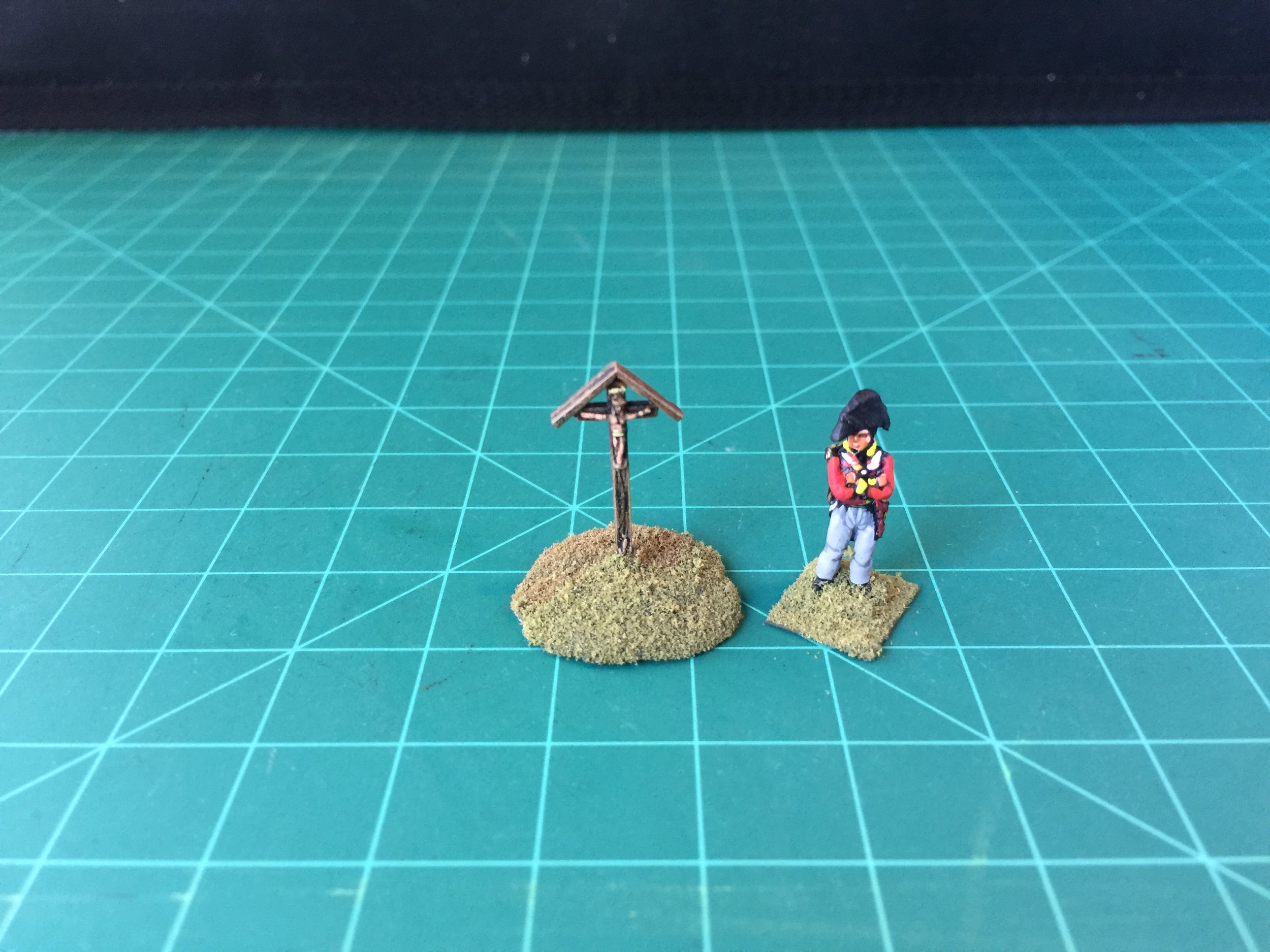
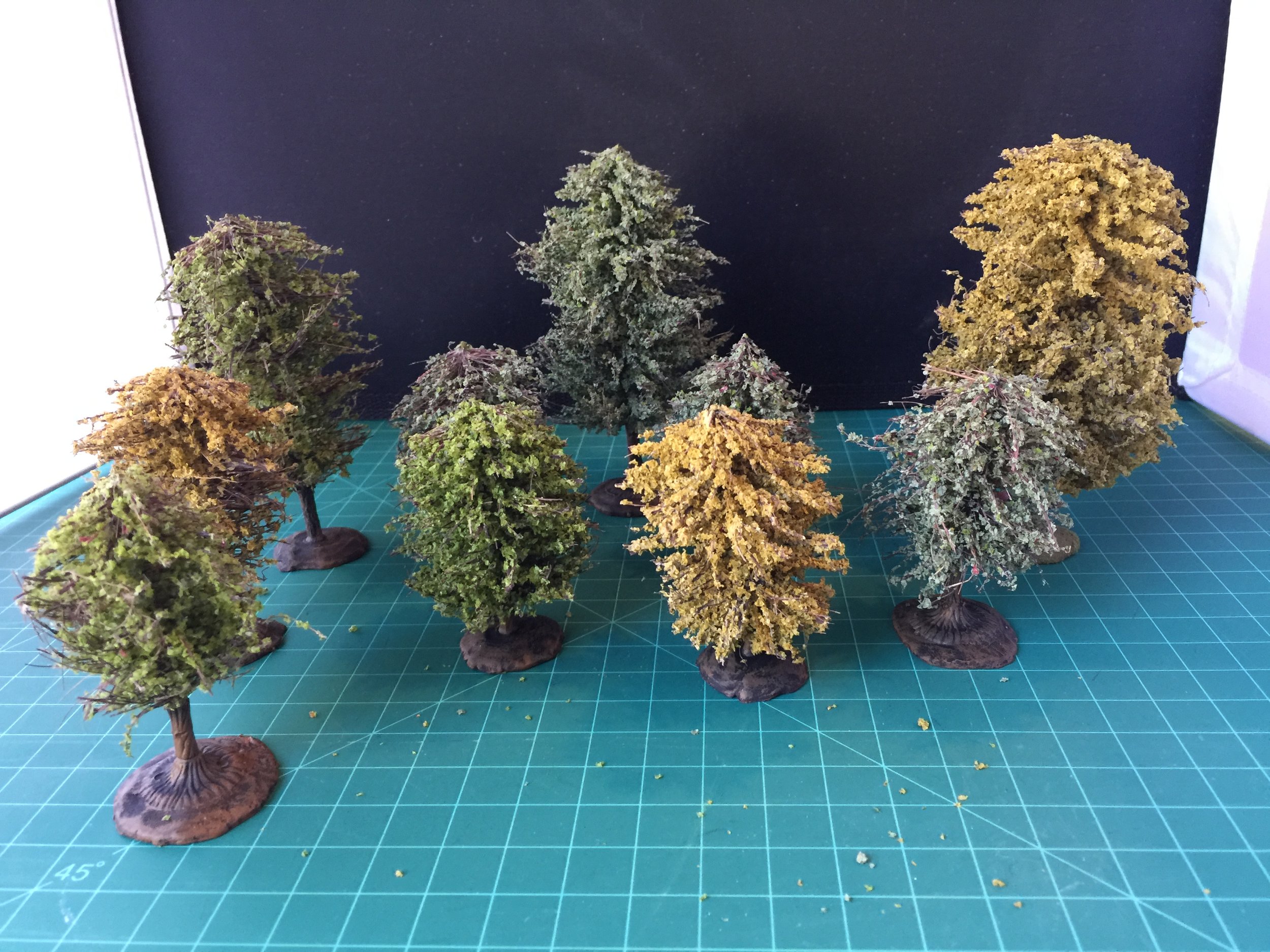
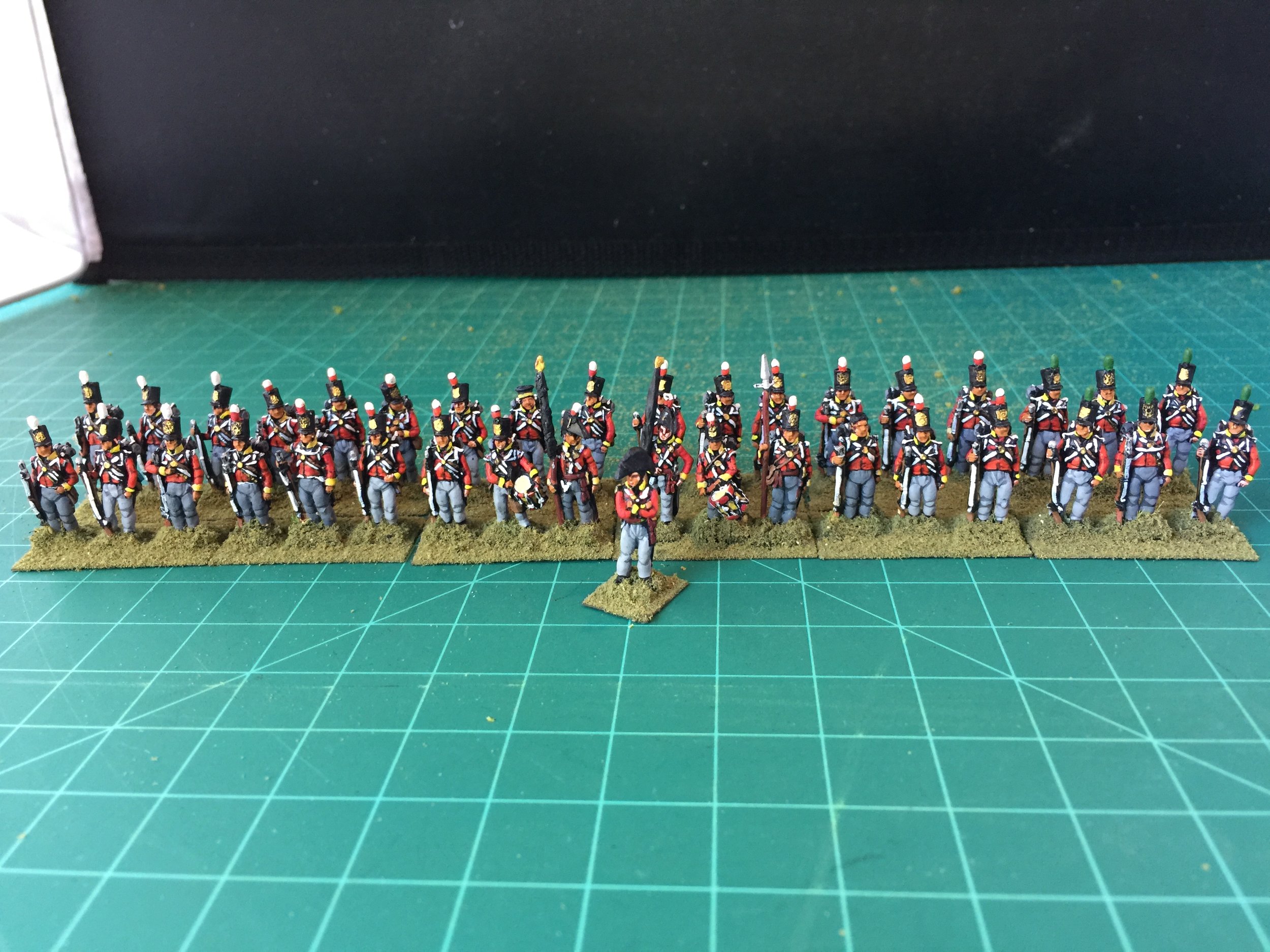
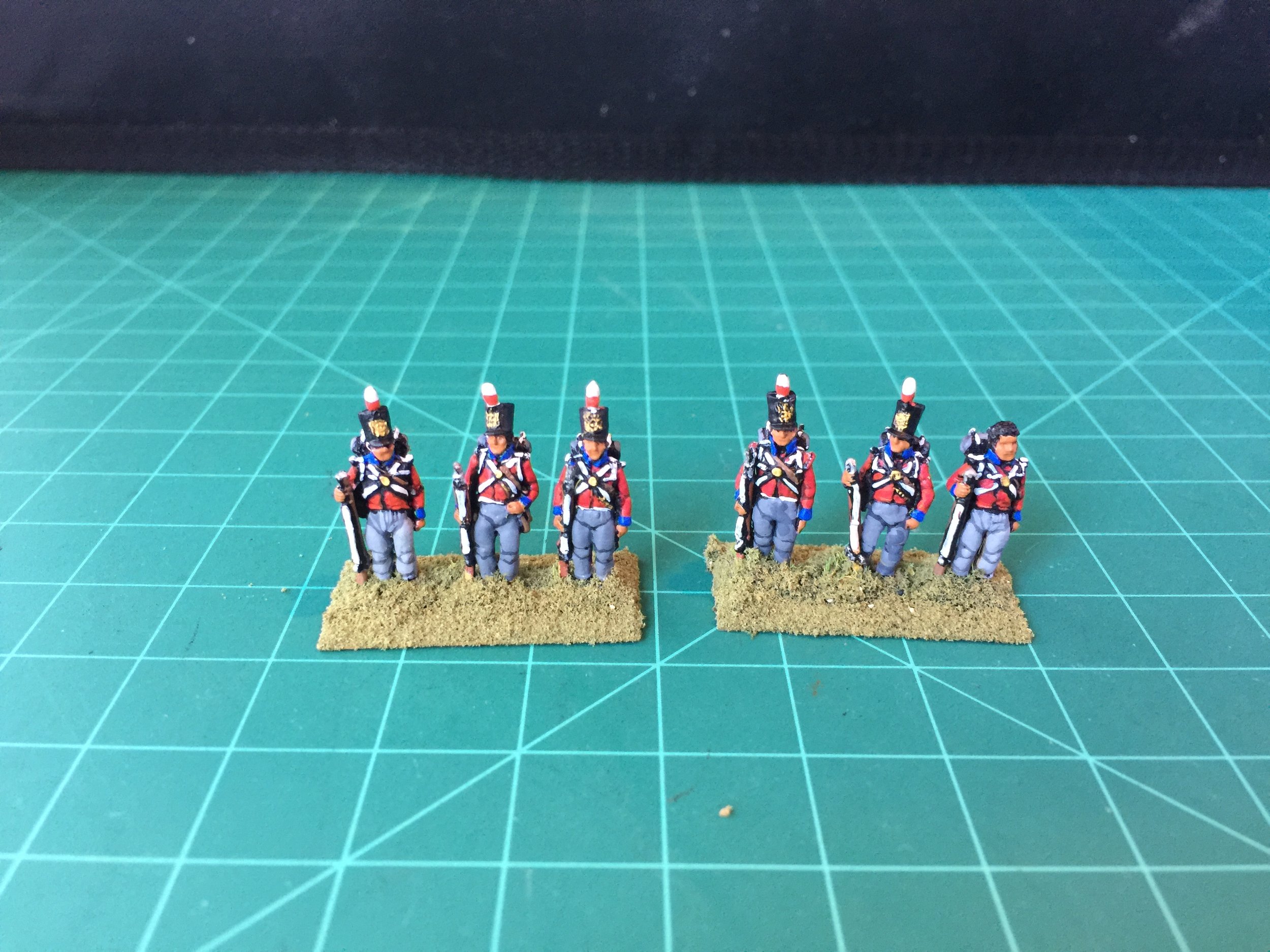
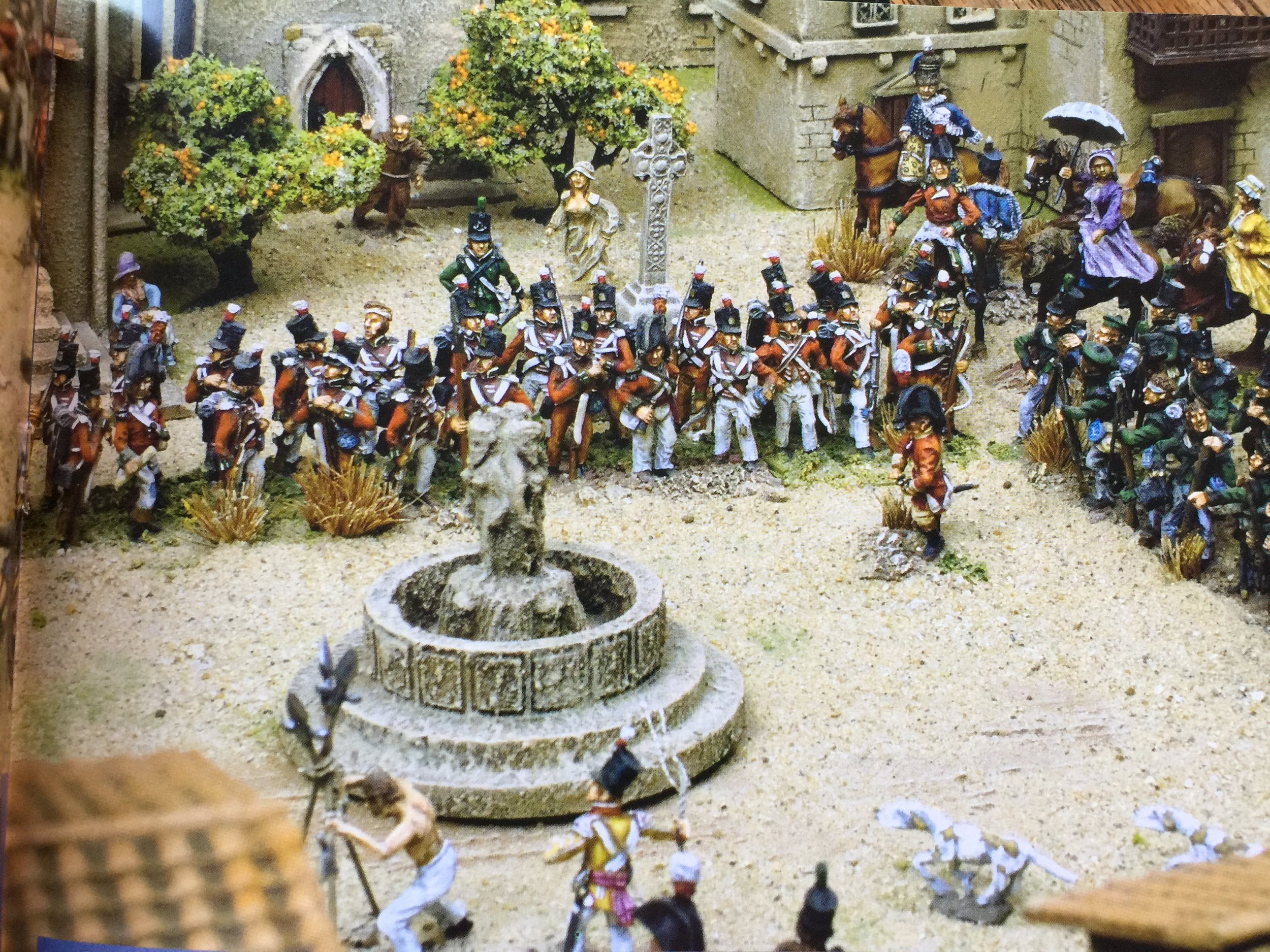
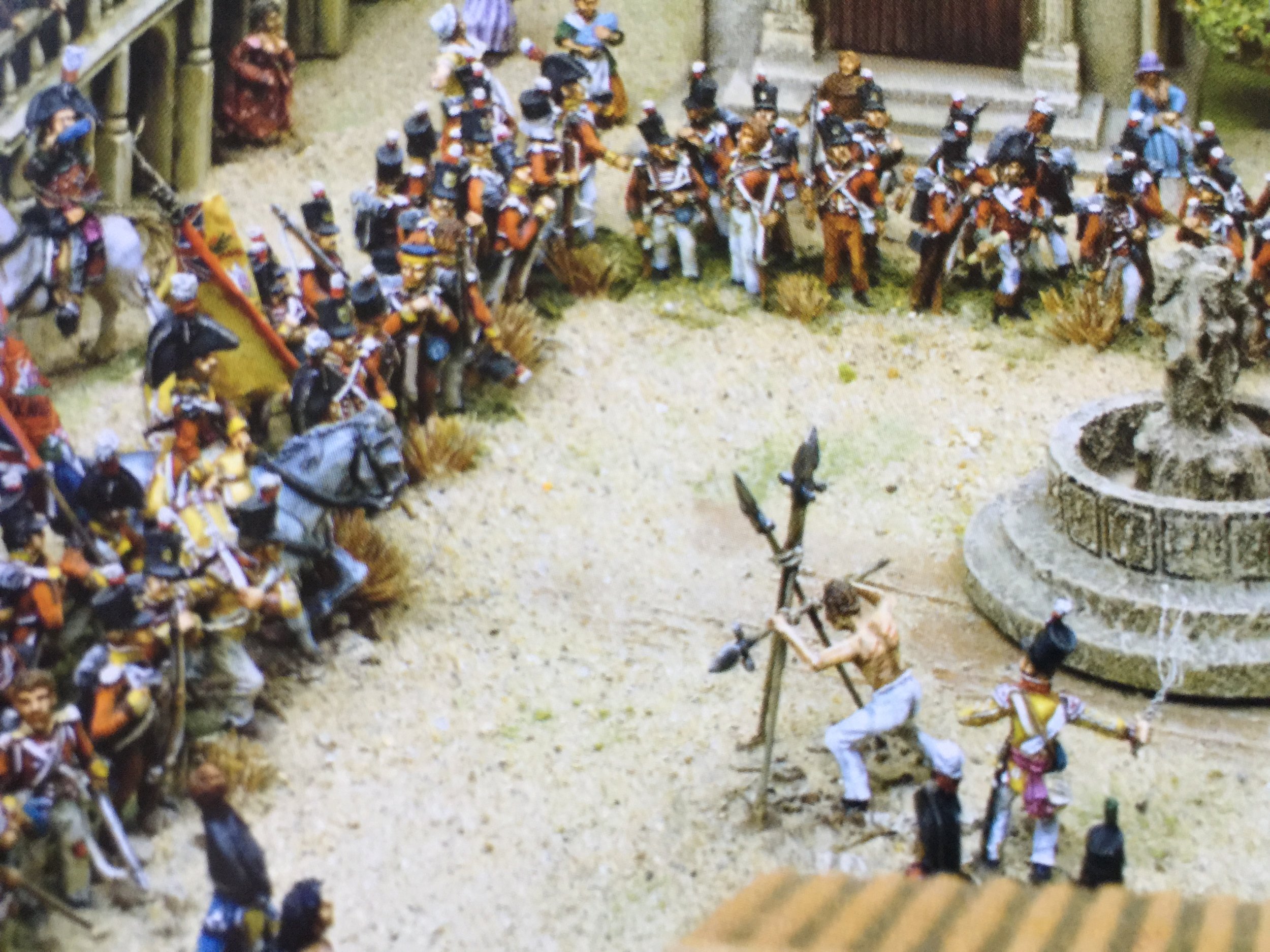
September 1, 2019
This week the focus of the workbench continued to be on the 15mm Spanish buildings for my Napoleonic Peninsular collection. I completed all of the ones I currently plan to use which will give me a town of 30 buildings (church included), two farm/vineyard buildings and a windmill. As I believe I said in a previous post, all of the buildings used in this collection are old-school 15mm. Most of the town buildings are Hovels, a few are Ian Weekley and a couple are of unknown origin including the church. The church is also interesting because it is actually a very undersized 25mm structure. I didn’t use the Hovels’ church because it was simply too small for the look I wanted.
With those buildings painted I decided to do a practice layout to see if I could pull them together into something that looked like a credible town. Fortunately, 15mm structures allowed me to do that practice layout on a dining table rather than having to set up one of the actual layout tables as is the case when I do a practice layout for my 28mm collections. With the addition of some walls and trees, I think it turned out to be a pretty good-looking Spanish town.
I brought the workbench week to a close with the painting of the town walls, a fountain, and a windmill.
